We decided to spend a couple of weeks on Seahike in La Línea de la Concepción, often referred to simply as La Línea. I don’t know if I explained what it is before, so I will now. It is a municipality of Spain belonging to the province of Cádiz, Andalusia. The city lies on the sandy isthmus which is part of the eastern flank of the Bay of Gibraltar, and abuts the Gibraltar–Spain border to the south. That is why we can easily walk to Gibraltar from Spain and back again. 🙂
We decided to take two weeks off for a few reasons. One is that we planned to take a cruise with ports of call in Norway. (We’d hoped to sail to Norway, but we knew it was super unlikely. And as you’ve seen, we didn’t even get Seahike to the UK!) Two of Michael’s sisters decided to join us on the cruise (yay!), so we had to find a date that would work for all of us. We landed on August 15-25. This left us with a big gap of time.
Michael and I also wanted to take a road trip to Portugal before the cruise. And we wanted some down time in La Línea after our long trip to the UK and Ireland.
Thus, we ended up with two weeks to rest and recuperate. And take some pictures of La Línea and the Rock on my runs.
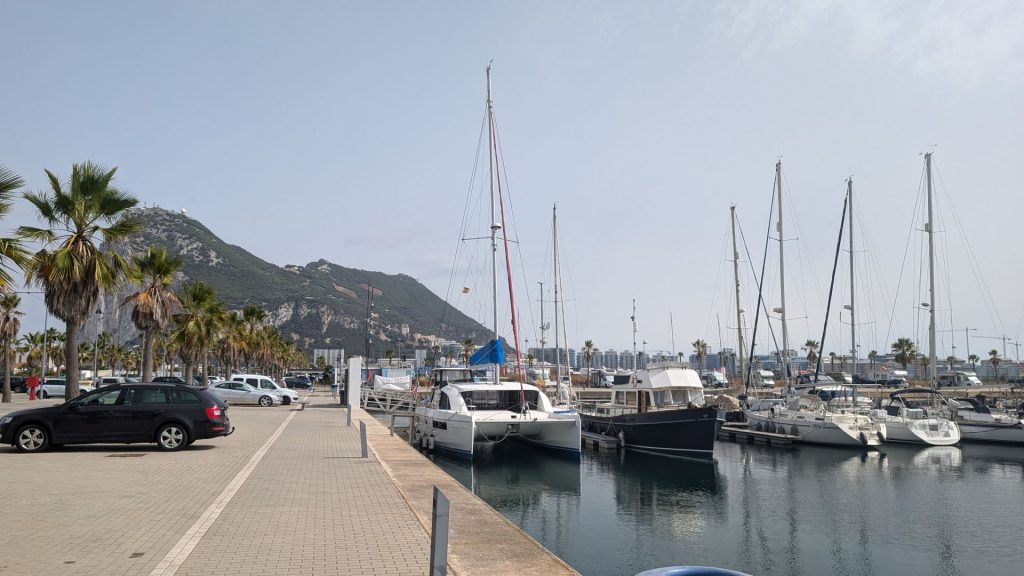
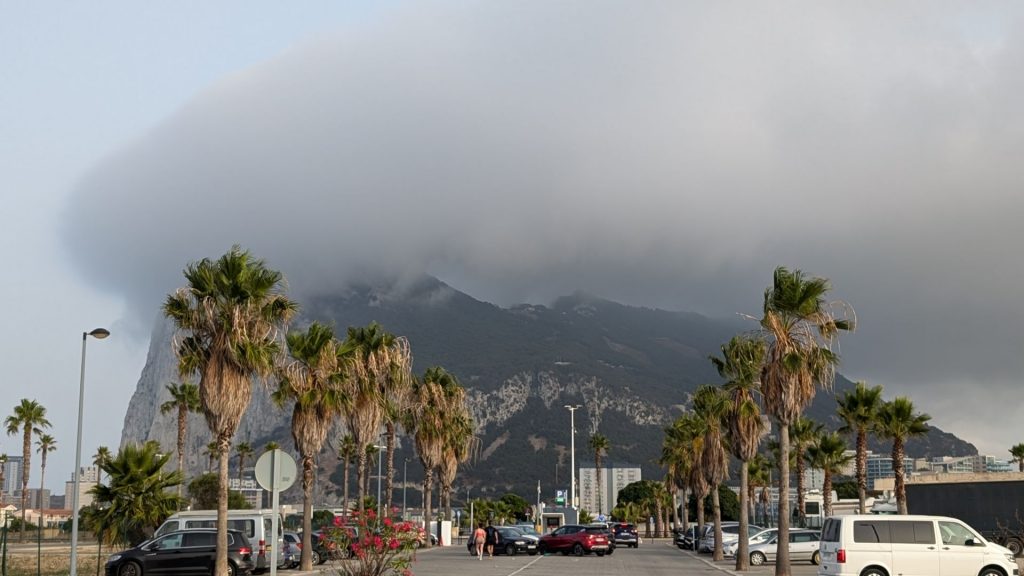
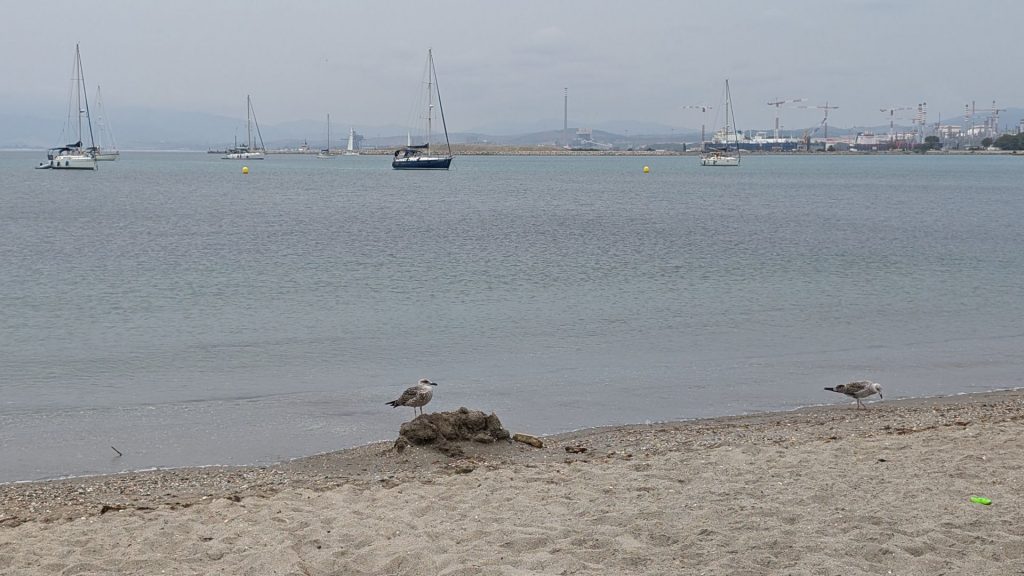
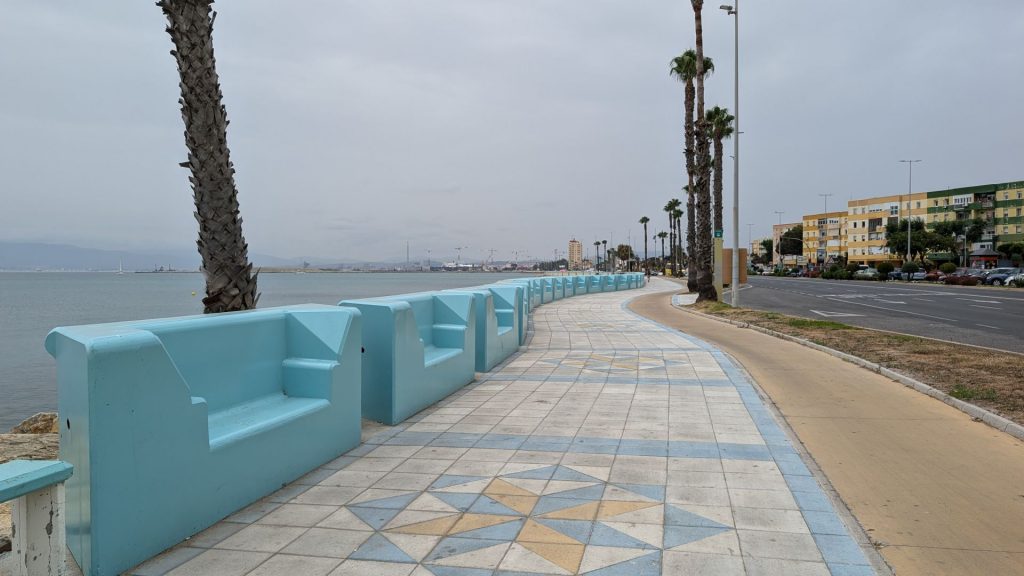
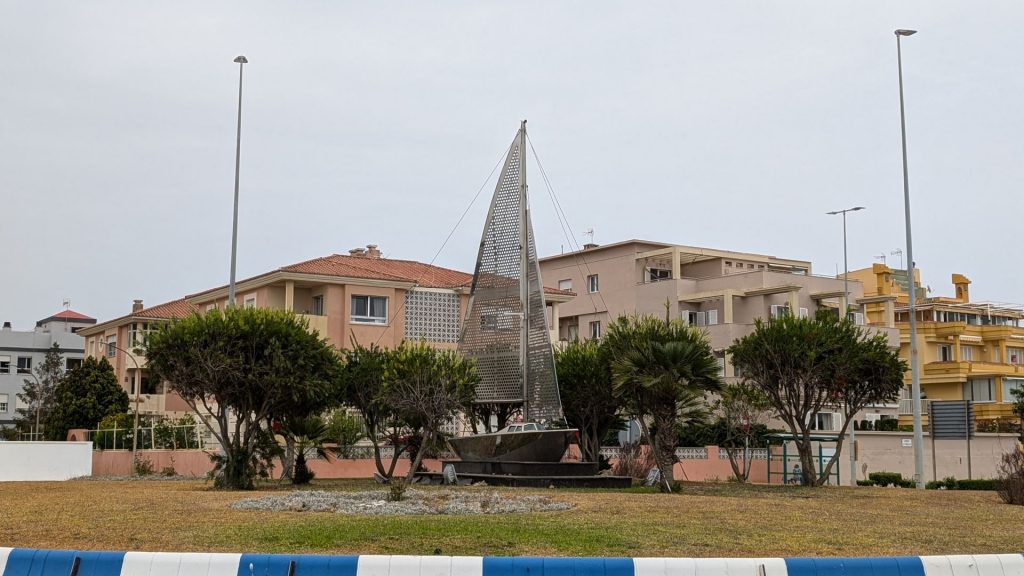
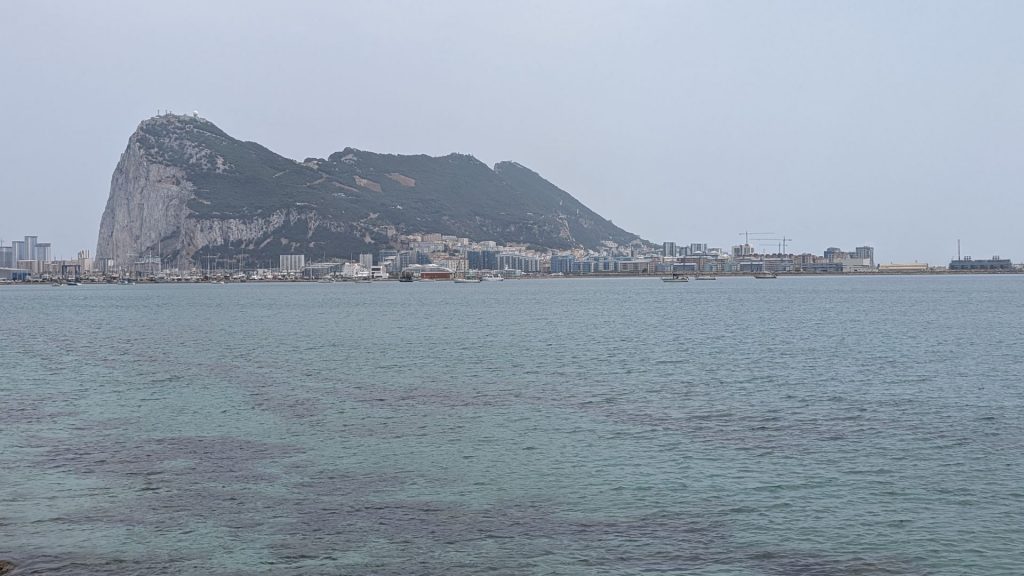
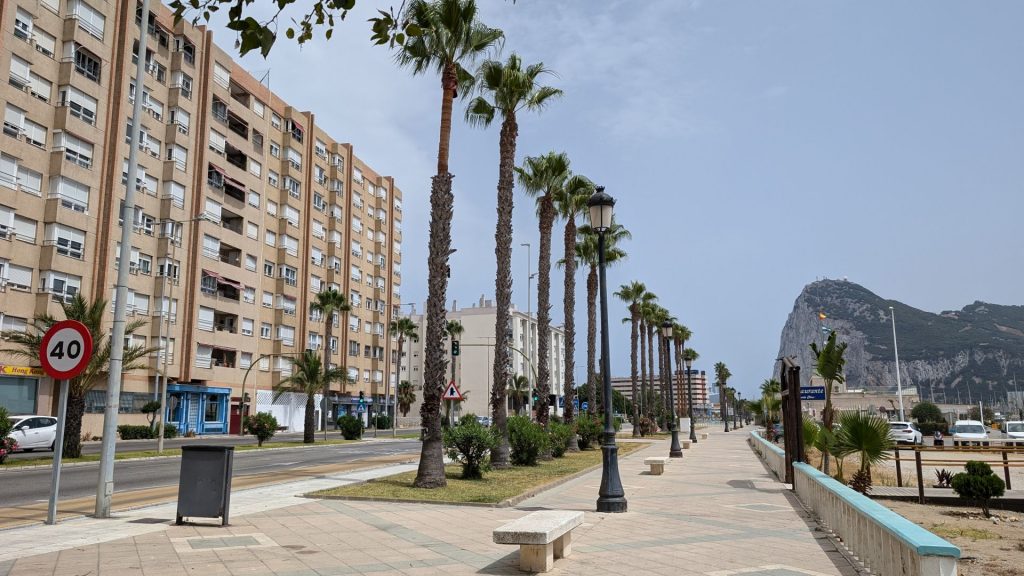
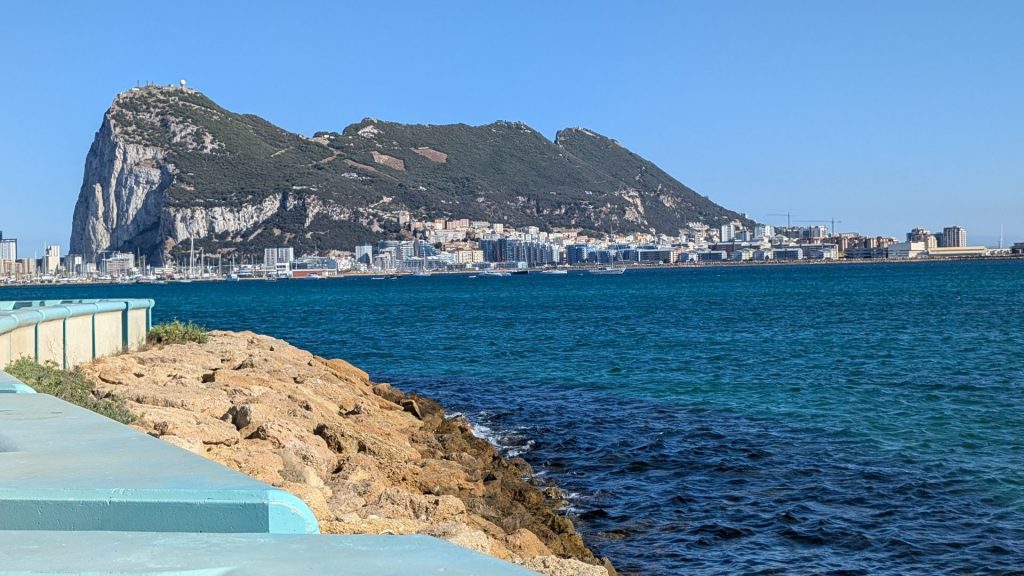
But wait, we don’t need two whole weeks to rest! Let’s take a two-day trip to Ceuta!
Ceuta (pronounced soo ta, with the emphasis on the first syllable) is an autonomous city of Spain on the North African coast. Bordered by Morocco, it lies along the boundary between the Mediterranean Sea and the Atlantic Ocean. The city is on a narrow isthmus that connects Mount Hacho (also held by Spain) to the mainland. On the summit of Mount Hacho is a fort used by the Spanish military.
Here it is on a map:
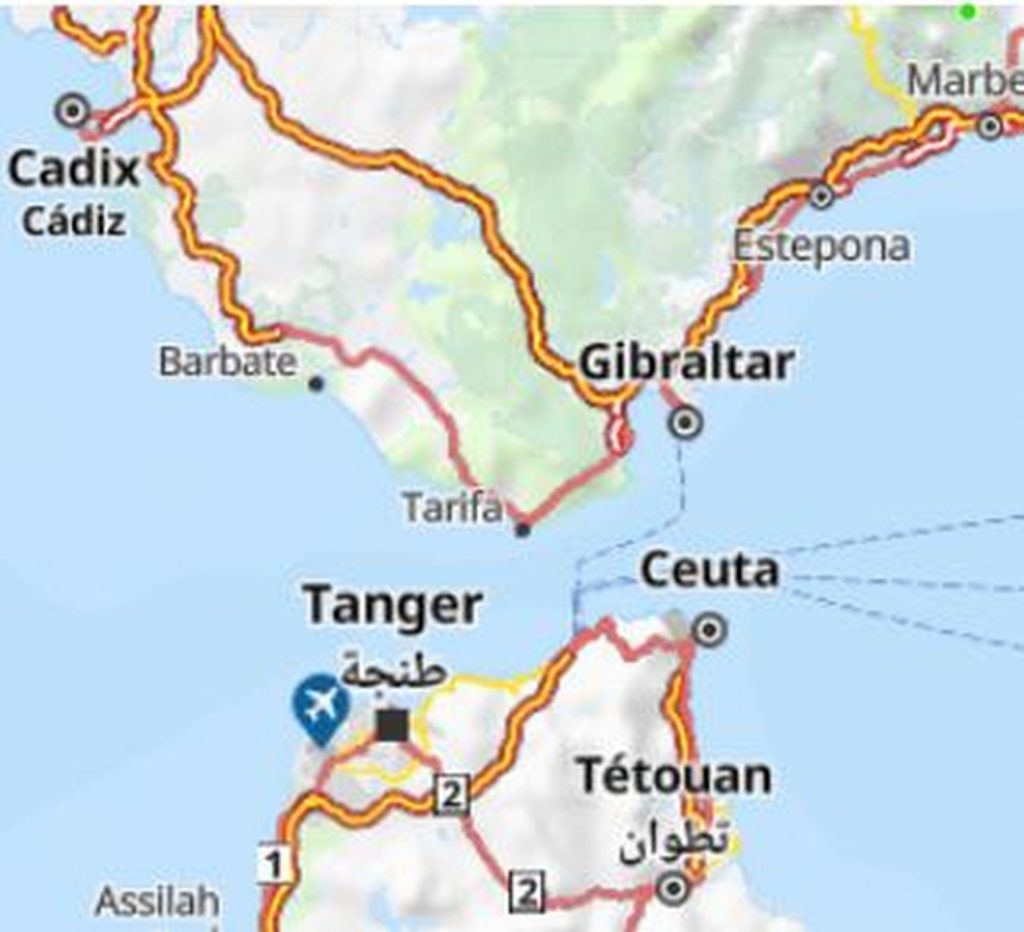
More specifically:
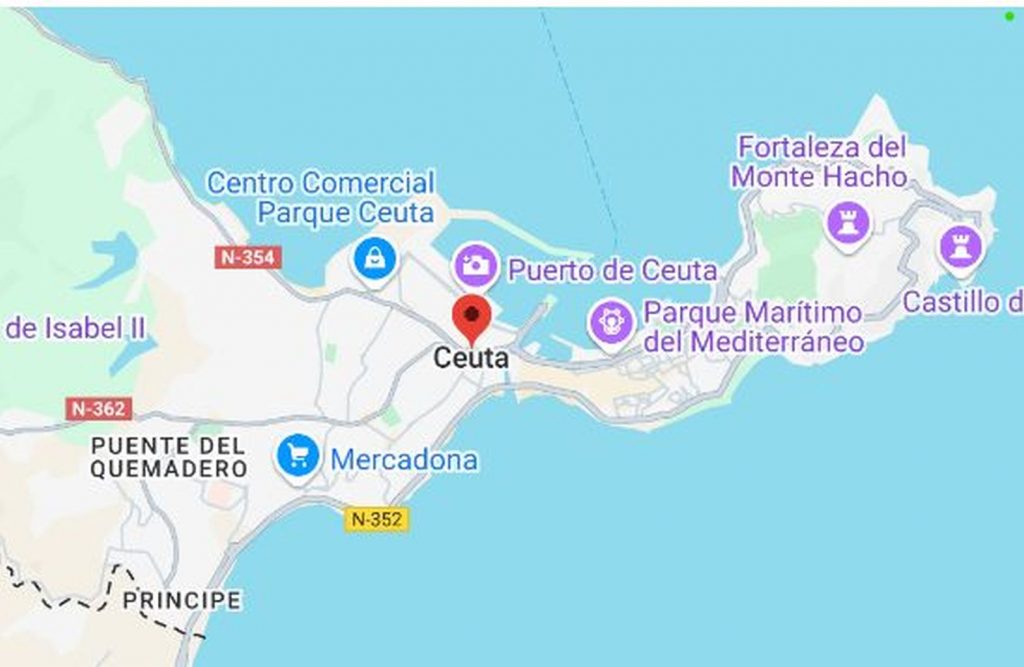
Ceuta is one of the special member state territories of the European Union, and it is one of several Spanish territories in Africa, which include Melilla and the Canary Islands. It was a regular municipality belonging to the province of Cádiz prior to the passing of its Statute of Autonomy in March 1995, as provided by the Spanish Constitution, henceforth becoming an autonomous city.
Ceuta, like Melilla and the Canary Islands, was classified as a free port before Spain joined the European Union. Its population is predominantly Christian and Muslim (about 1/3 Muslim), with a small minority of Sephardic Jews and Sindhi Hindus, from Pakistan.
Public administration is the city’s main economic activity. Fishing and the drying and processing of the catch are important industries, as are brewing, metallurgy, and machine repairs. Tourism has gradually become significant. There is ferry service to Algeciras on the European side of the Strait of Gibraltar. A teacher-training college, business school, and administrative school are affiliated with the University of Granada.
Spanish is the official language. Spanish and Darija Arabic are the two main spoken languages.
Here’s a nice article if you’d like to read more about Ceuta: https://www.cnn.com/travel/ceuta-spain-north-africa/index.html
And it was just a ferry ride away! But first we had to take the bus to Algeciras. According to the (incorrect) temperature on the bus, we were all burnt to a crisp!:
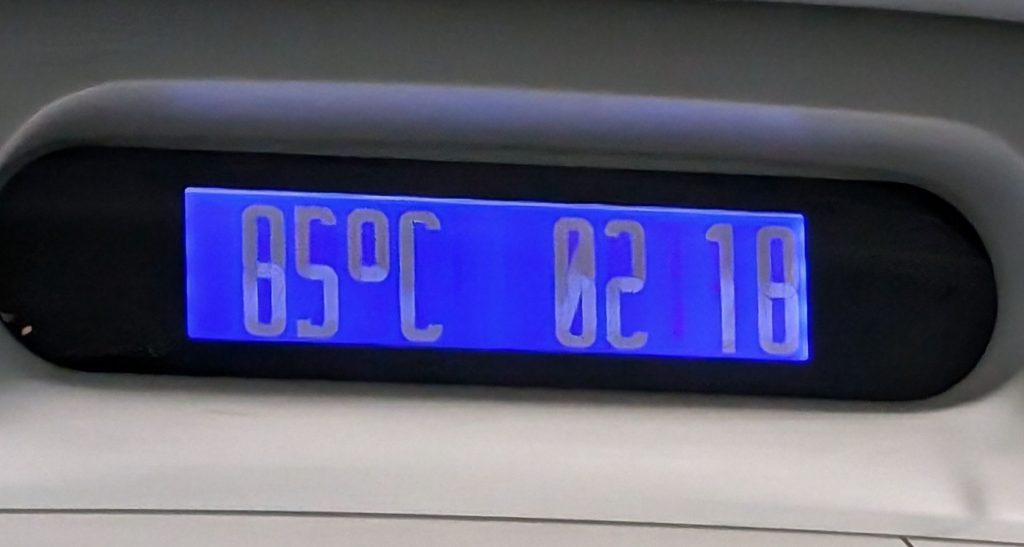
That’s the centigrade temperature, mind you. It translates to 185 degrees Fahrenheit. Oh, and the time and date were wrong as well. It wasn’t 2:18 a.m.
This is the nicest ferry we have ever traveled on, so we sat back and enjoyed the ride. And the spray presented us with a beautiful little rainbow!
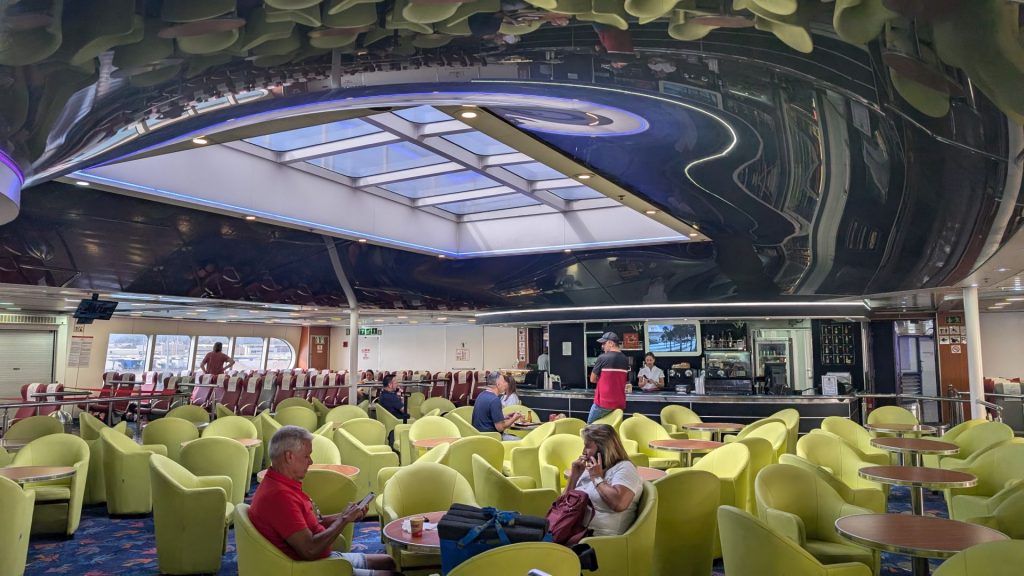
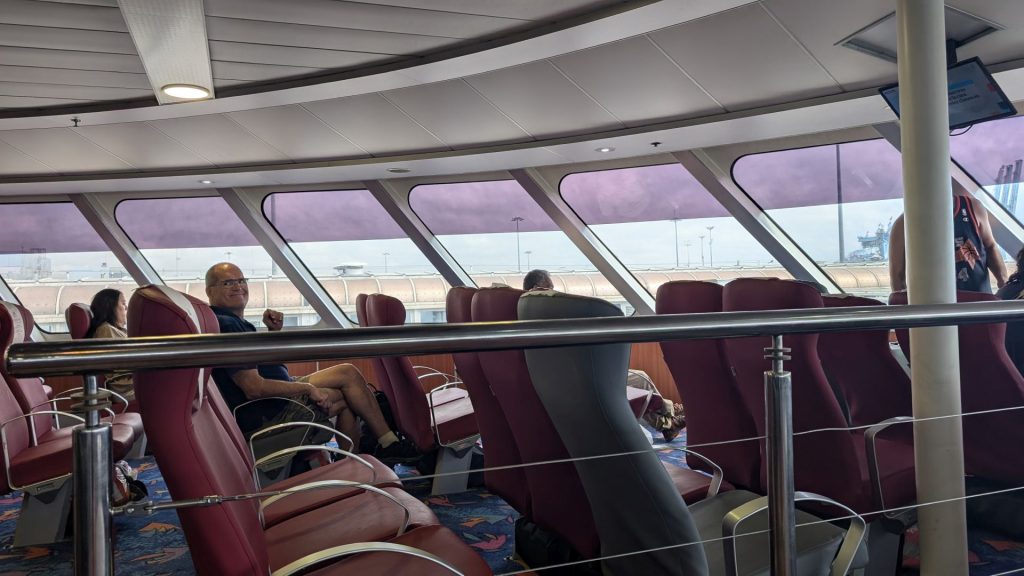
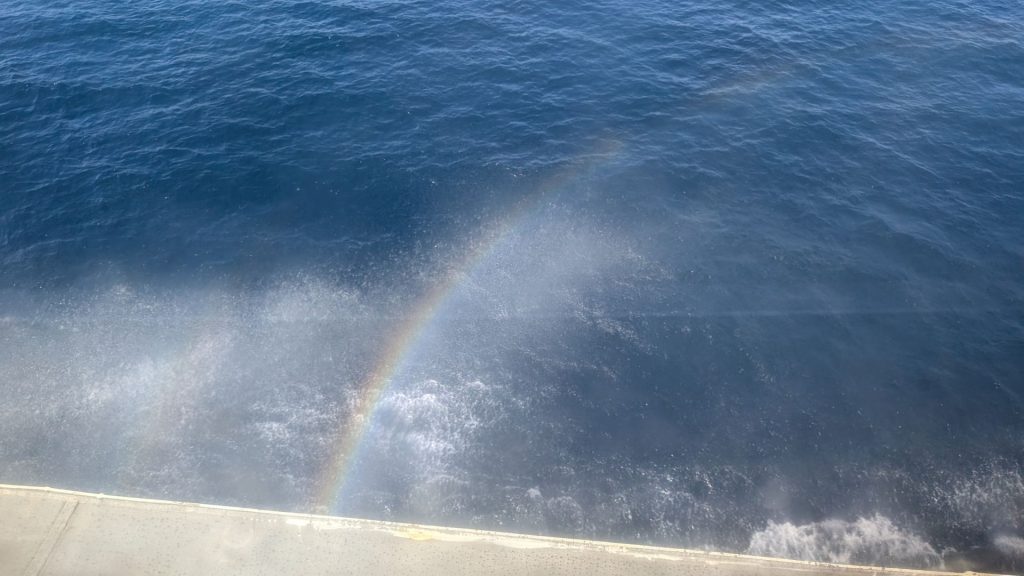
Almost the moment we exited the ferry, we realized that we were in a beautiful city. The fountains, flowers, statues, even the roundabouts! Beauty everywhere! This was going to be a nice visit. Here are some of the things we saw on the first day.
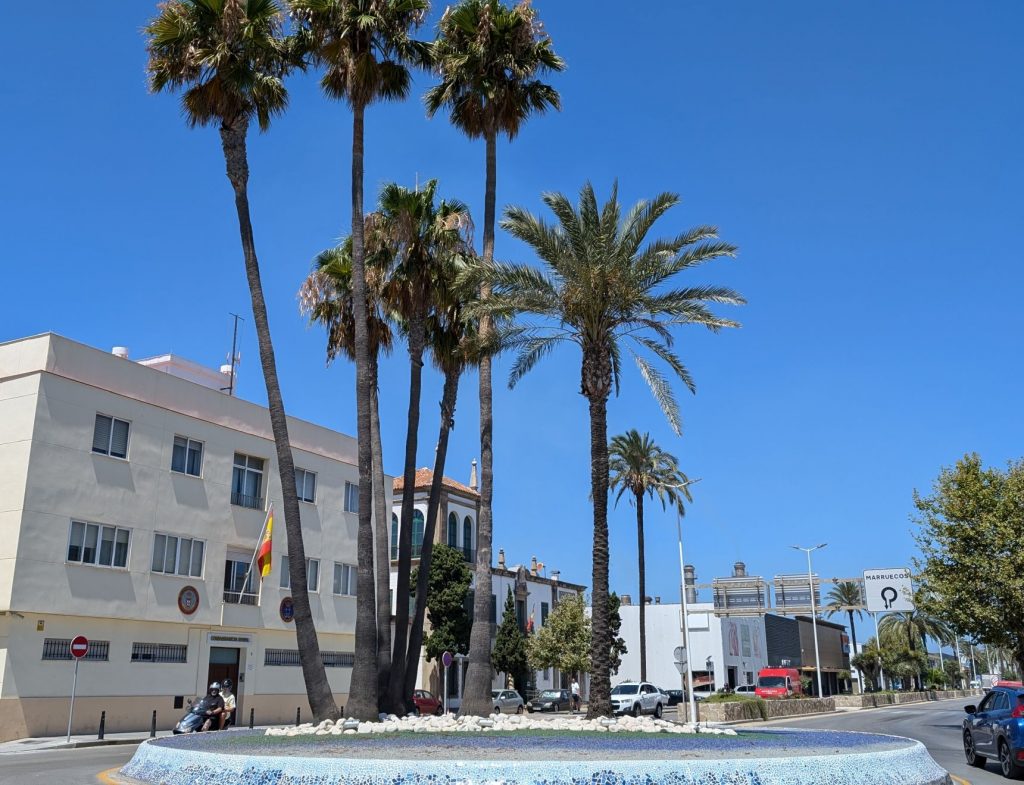
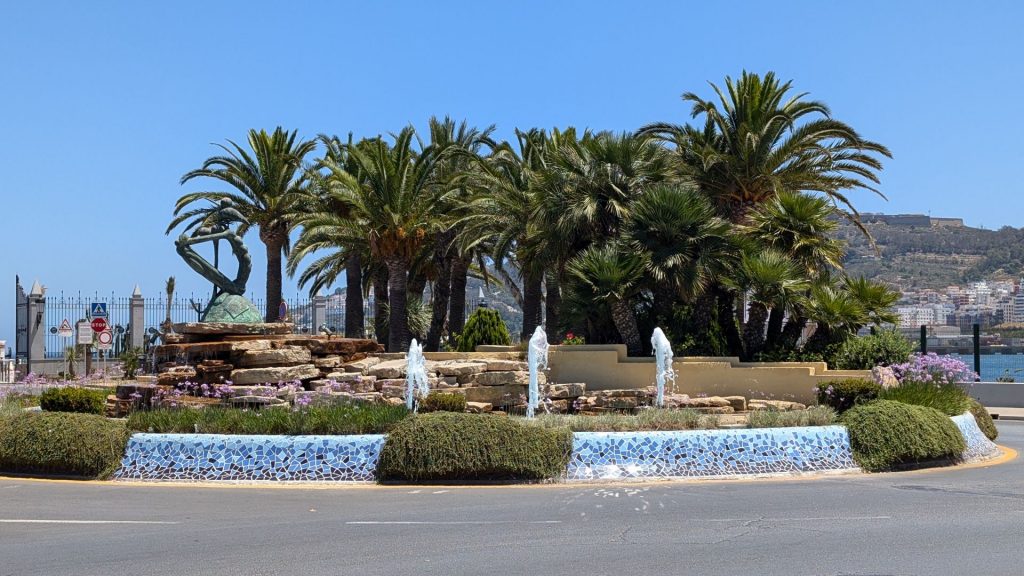
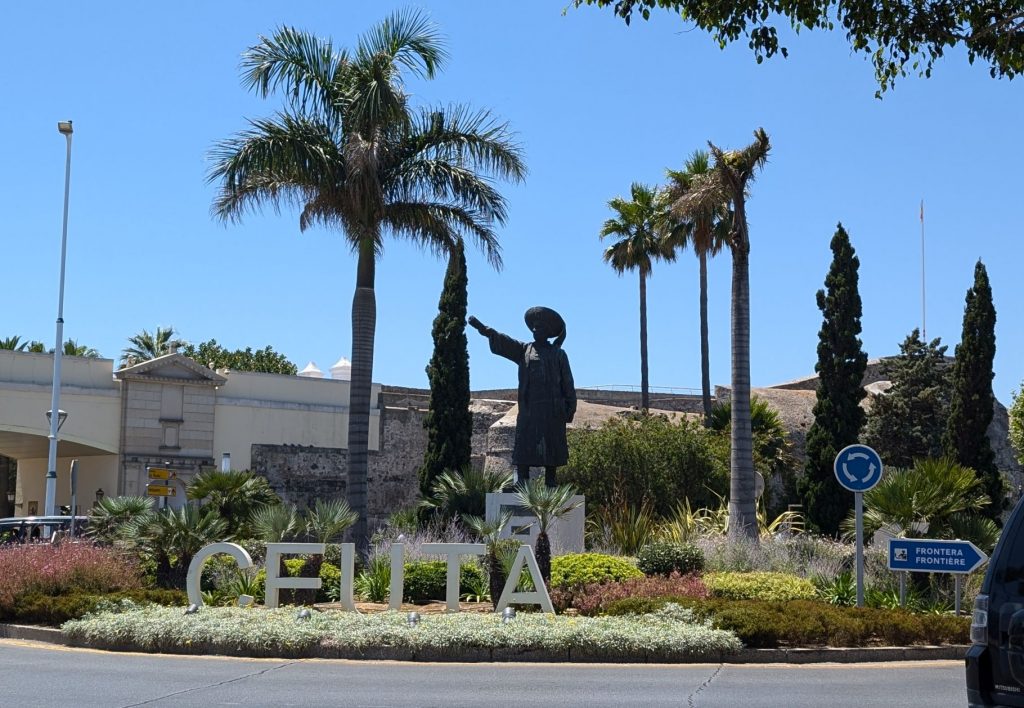
The statue below is dedicated to “The Little Almond Seller.” This sculpture honors Manuel Sánchez Ordóñez, a beloved figure in Ceuta, who was fondly known by his nickname. For many years, he made and sold sugared almonds on the Paseo de Las Palmeras, right in front of the statue of González-Tablas. The sculpture now stands in the very spot where he once worked, capturing the spirit of this iconic local vendor.
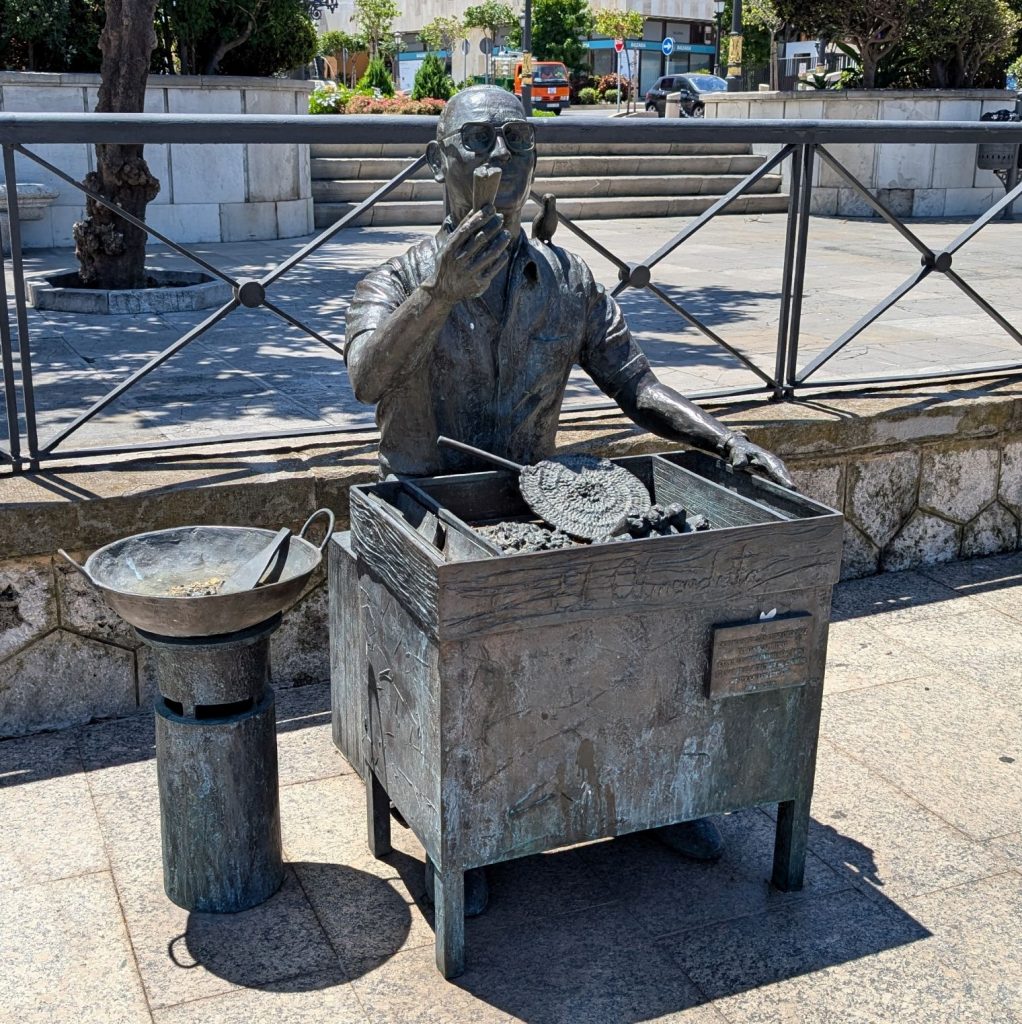
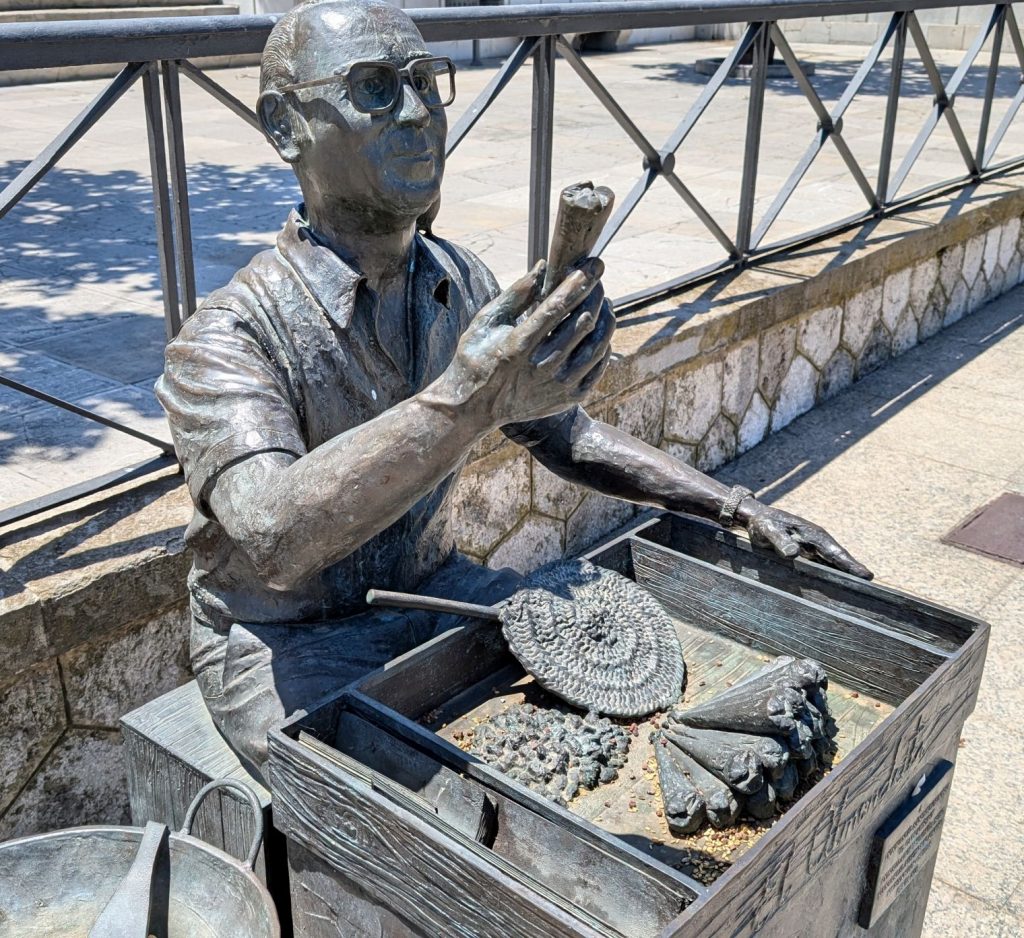
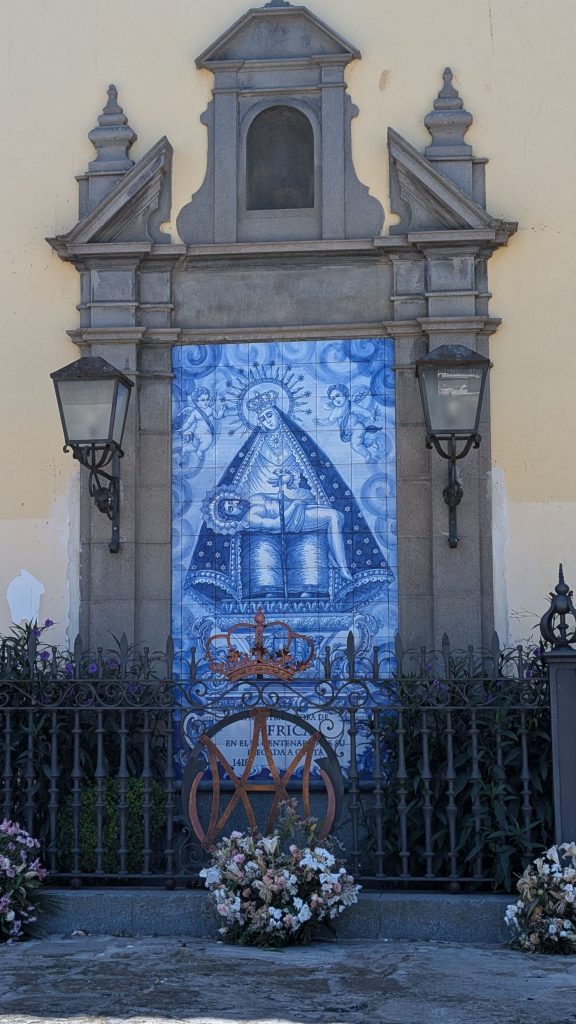
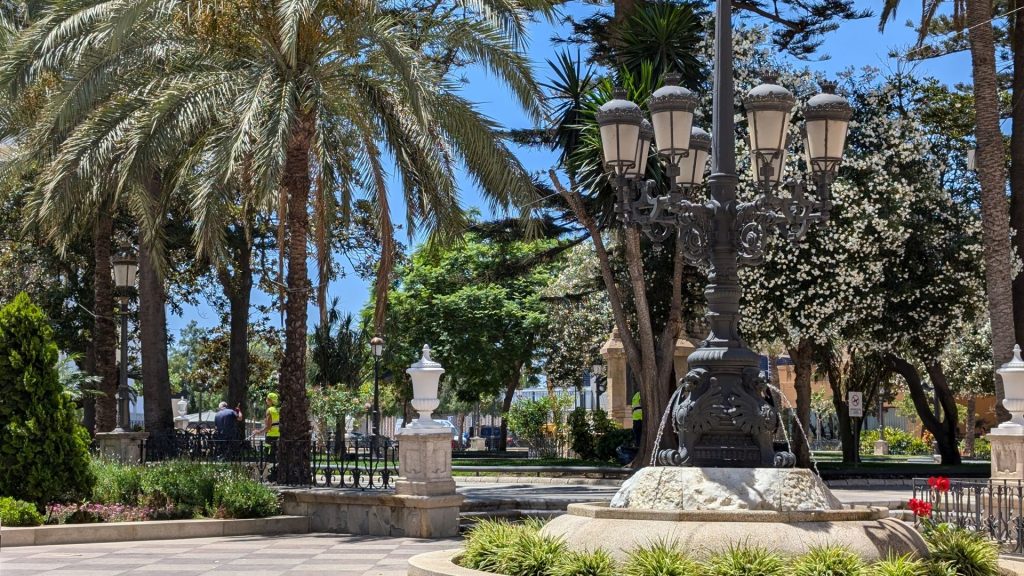
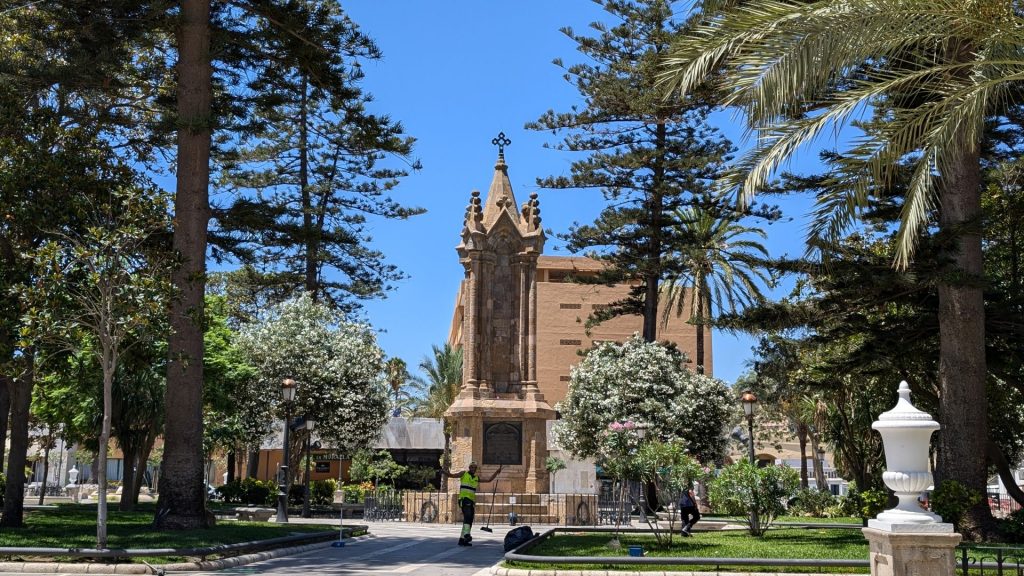
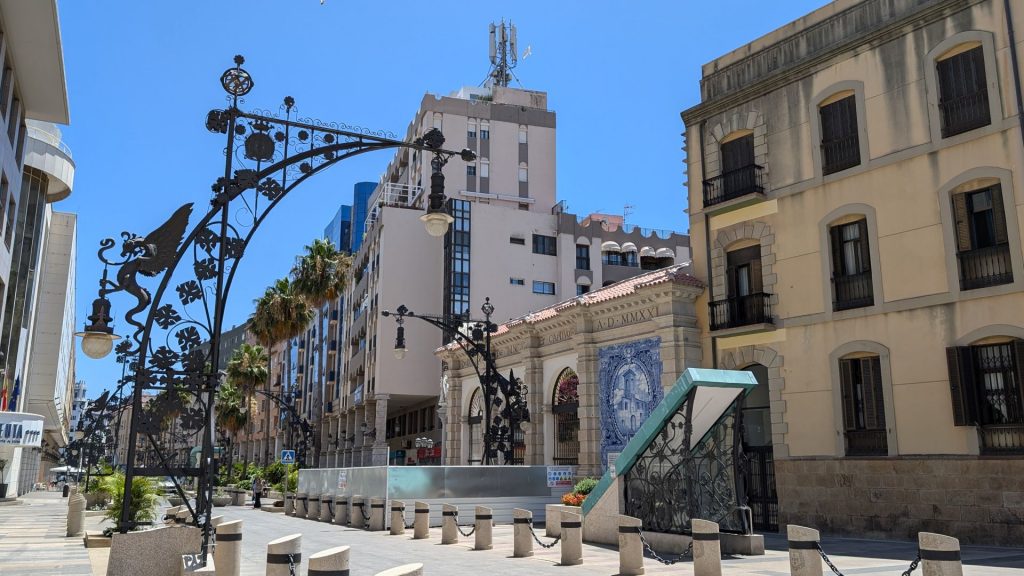
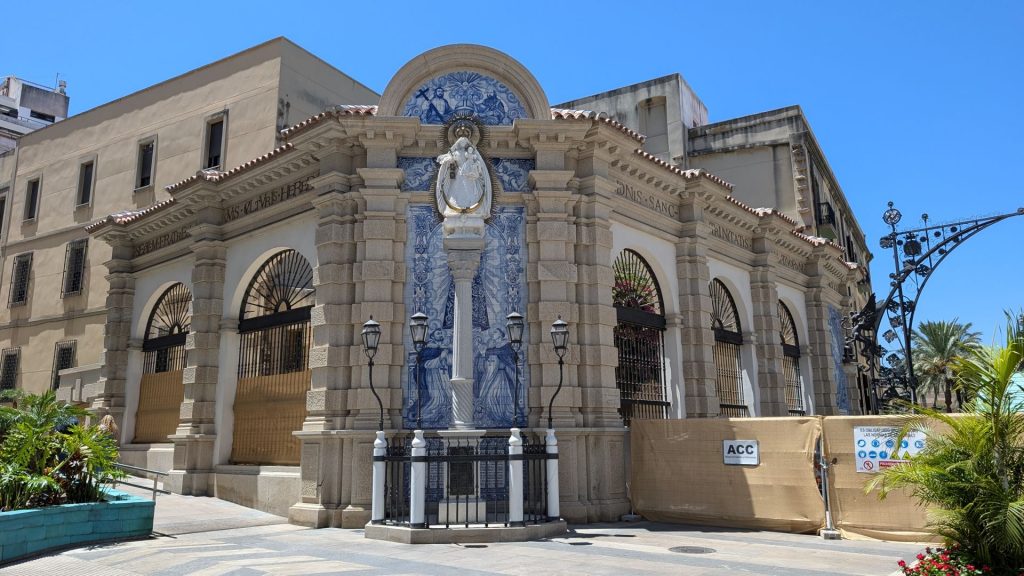
The hotel has a pool and I was ready to relax by/in it and read a book on my Kindle. So that’s how I spent an hour or two later that day. That was the end of day #1.
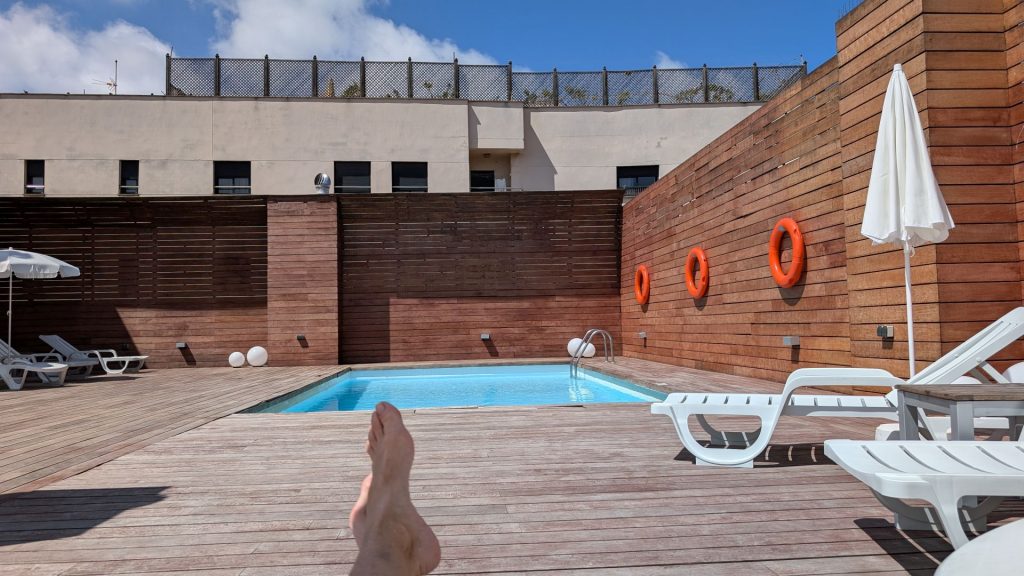
We spent much of the second day doing what we did the first day, walking around and enjoying the city. We started with breakfast. I think Michael’s items were both sweet. I don’t remember what mine tasted like (the one on the right).
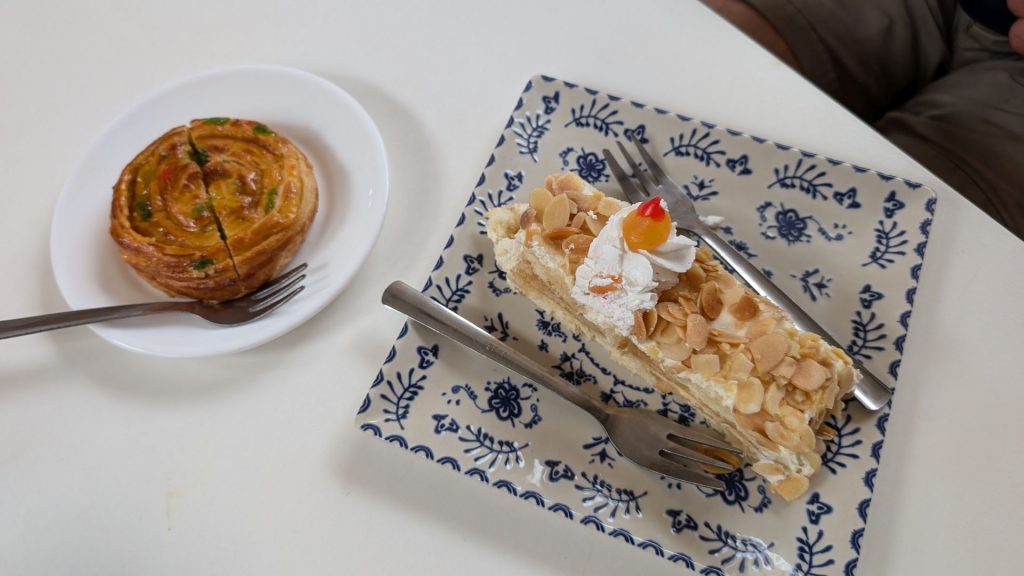
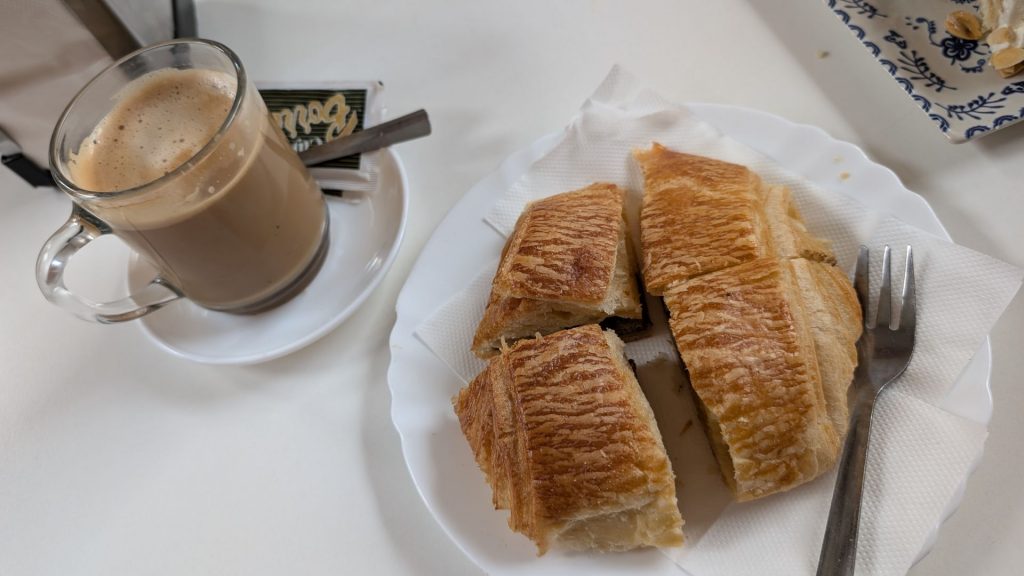
The picture on the right-hand side below is of the Cathedral of the Assumption.
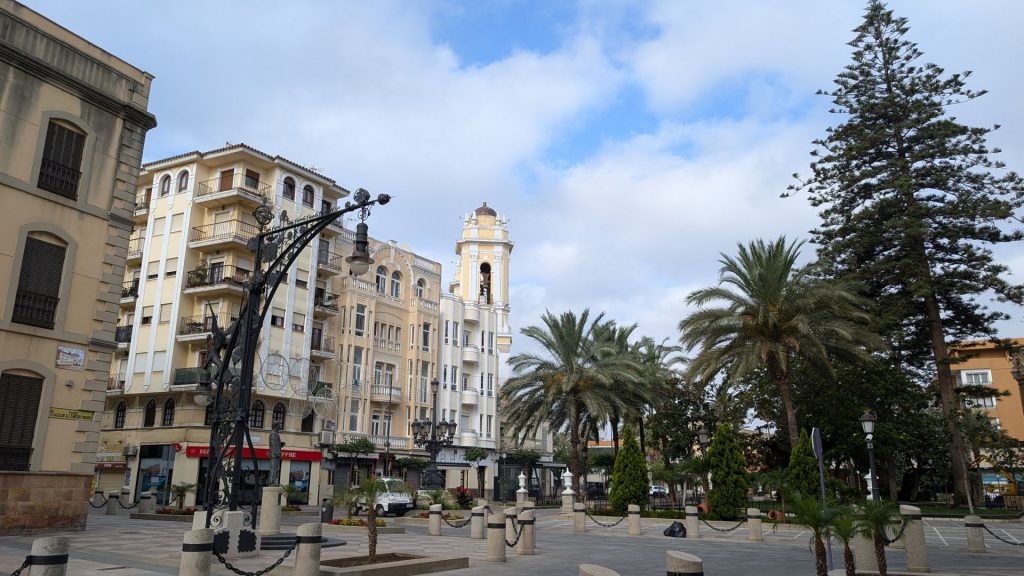
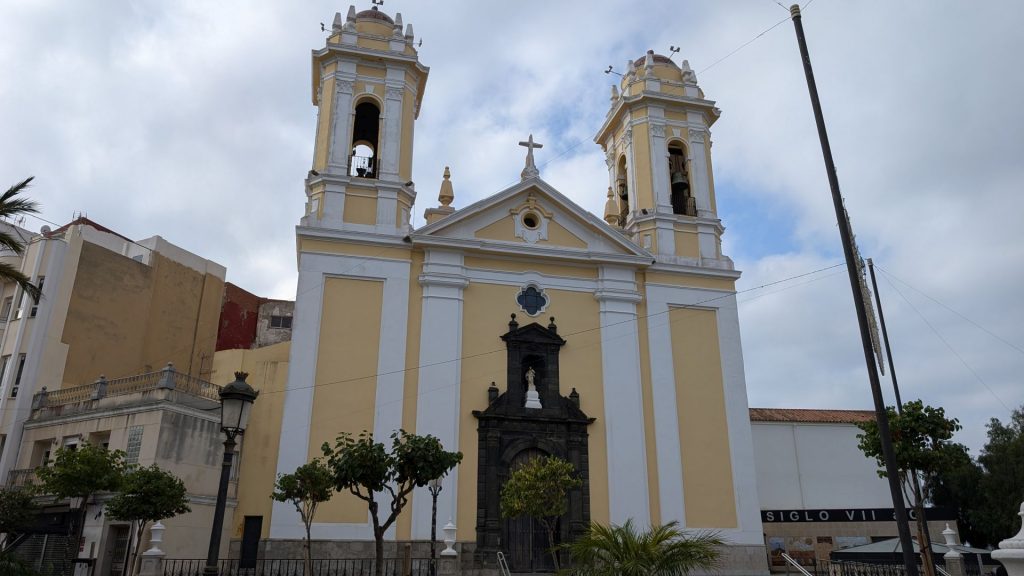
The Royal Walls of Ceuta are a line of fortification in Ceuta. The walls date to 962 in their oldest part and the most modern parts to the 18th century. They remain largely intact, with the exception of some outworks, and are listed as a Spanish Property of Cultural Interest.
The El Conjuncto Monumental de las Muralla en Ceuta, Spain is a massive building with a moat that divides the city’s walls. The walls and moat were built to protect the peninsula and isthmus of Almina, where the ancient city of Ceuta stood.
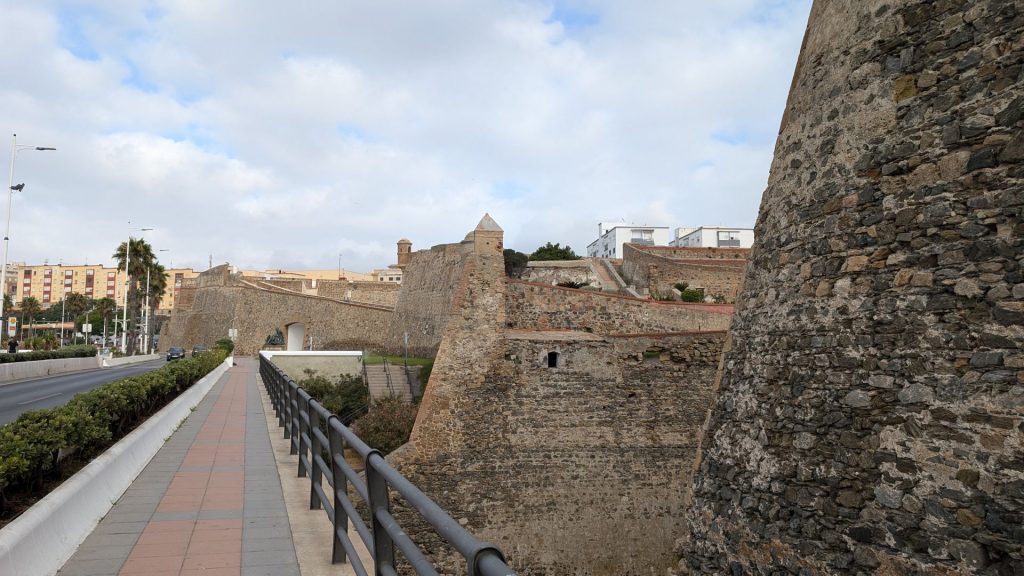
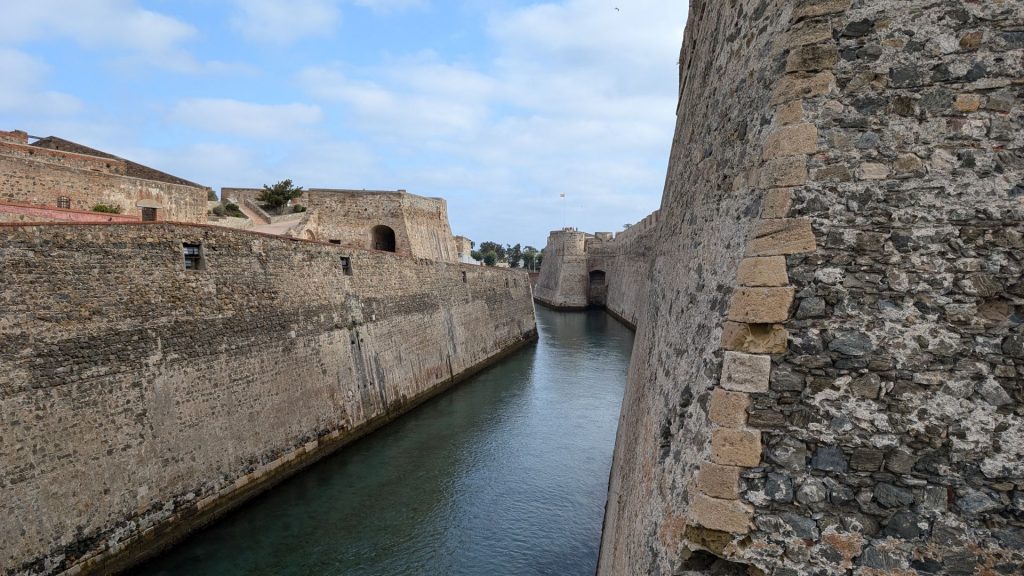
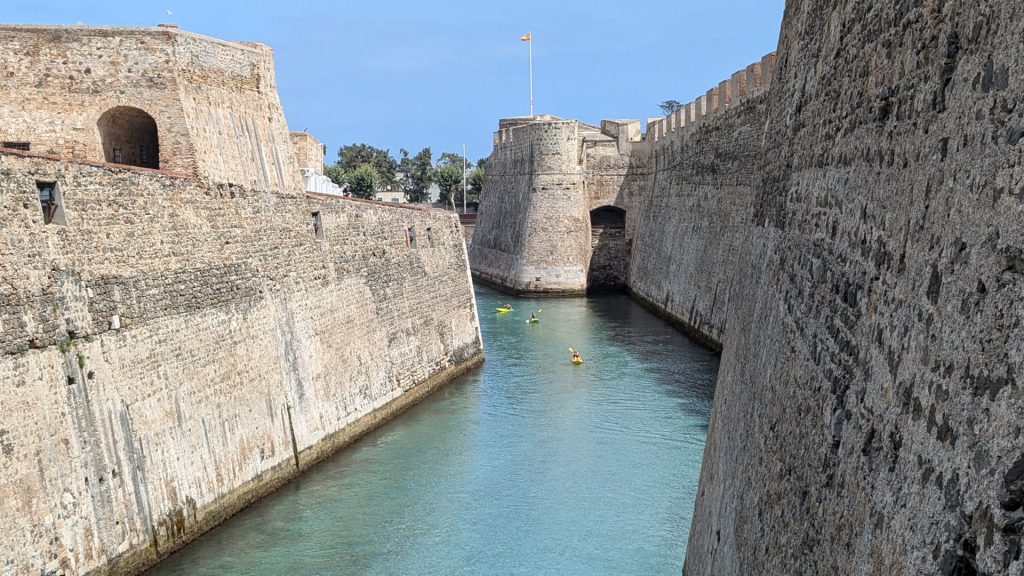
The monument, “Tribute to Artillery,” commemorates the third centenary of the founding of the 30th Mixed Artillery Regiment of Ceuta. It depicts an artilleryman in 1850s attire alongside a cannon and ammunition, recreating a historical scene.
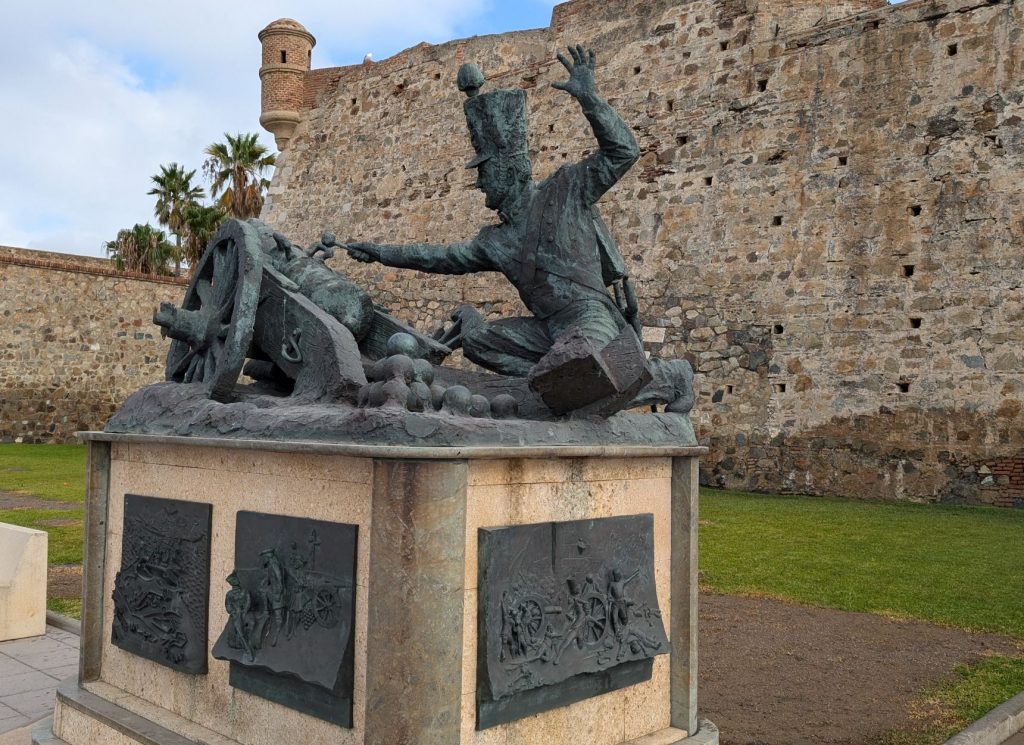
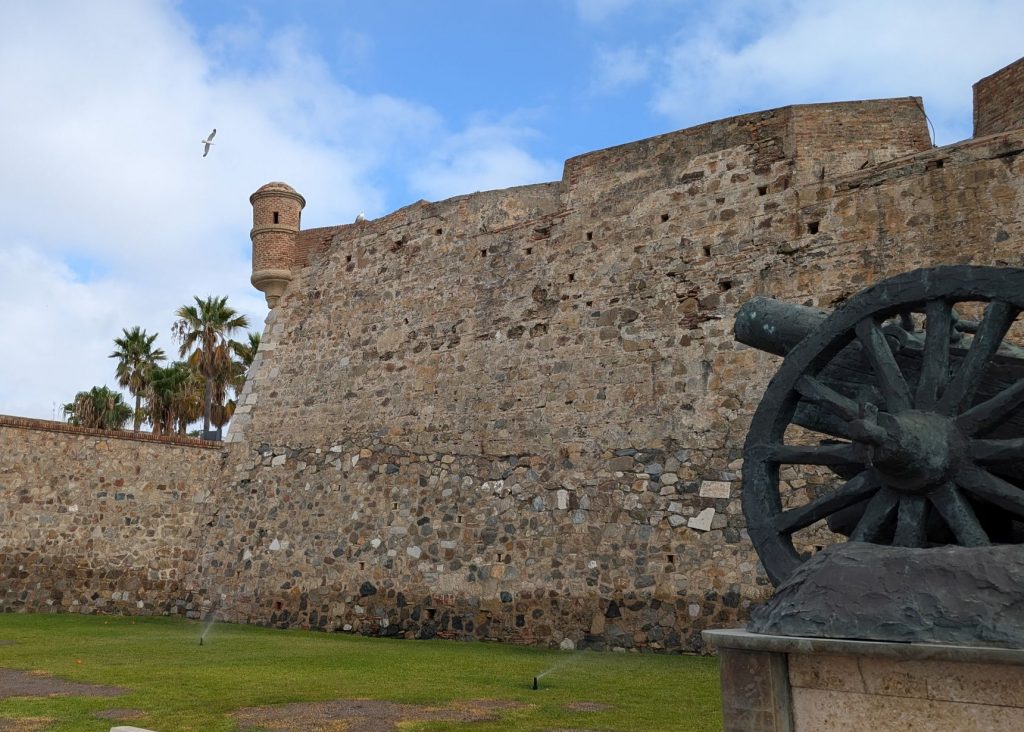
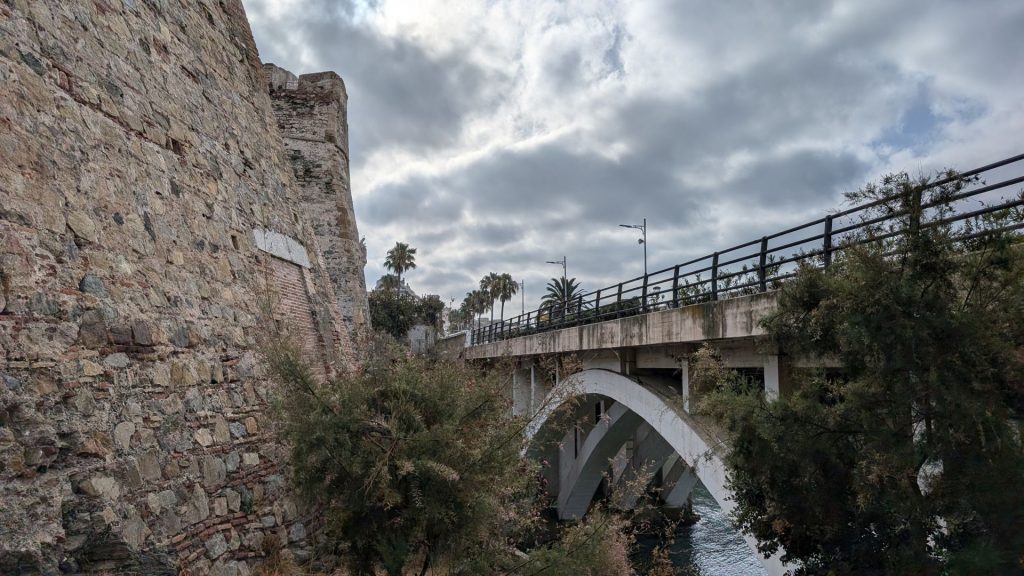
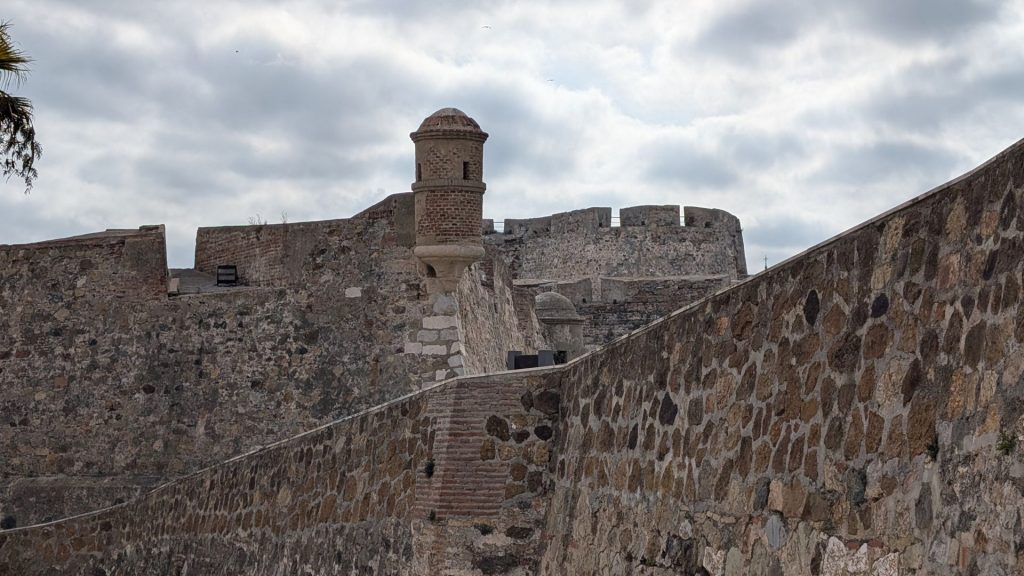
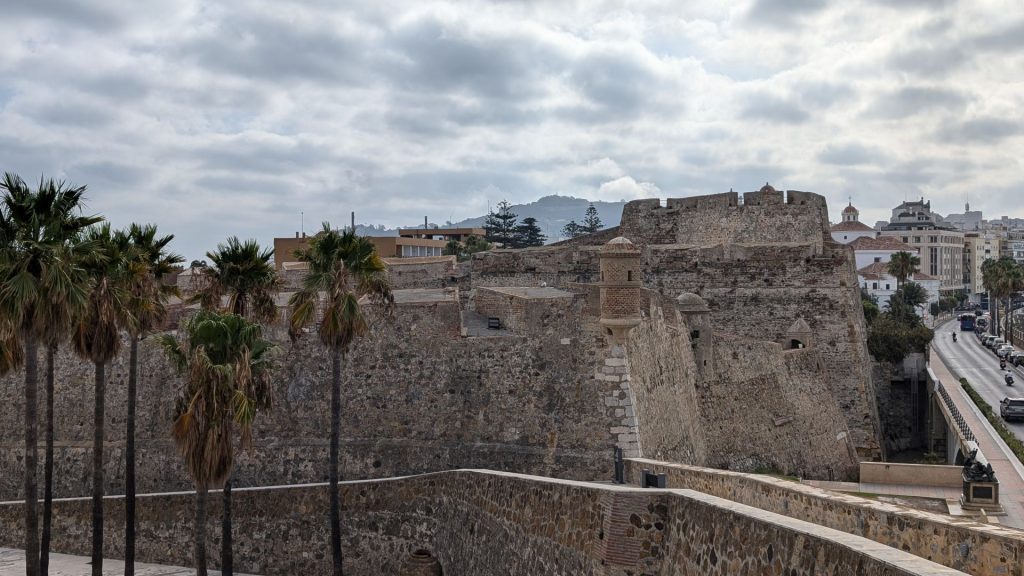
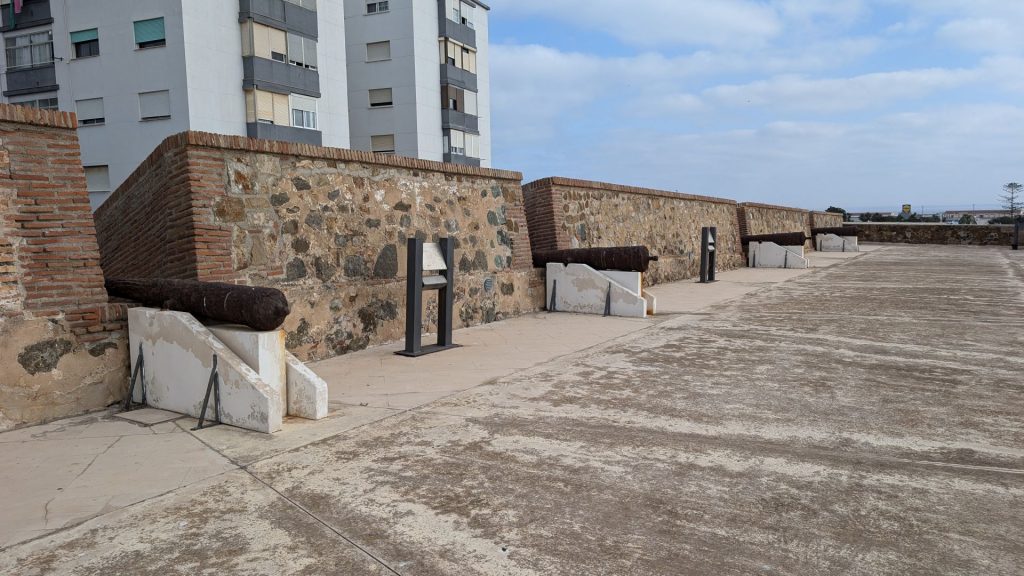
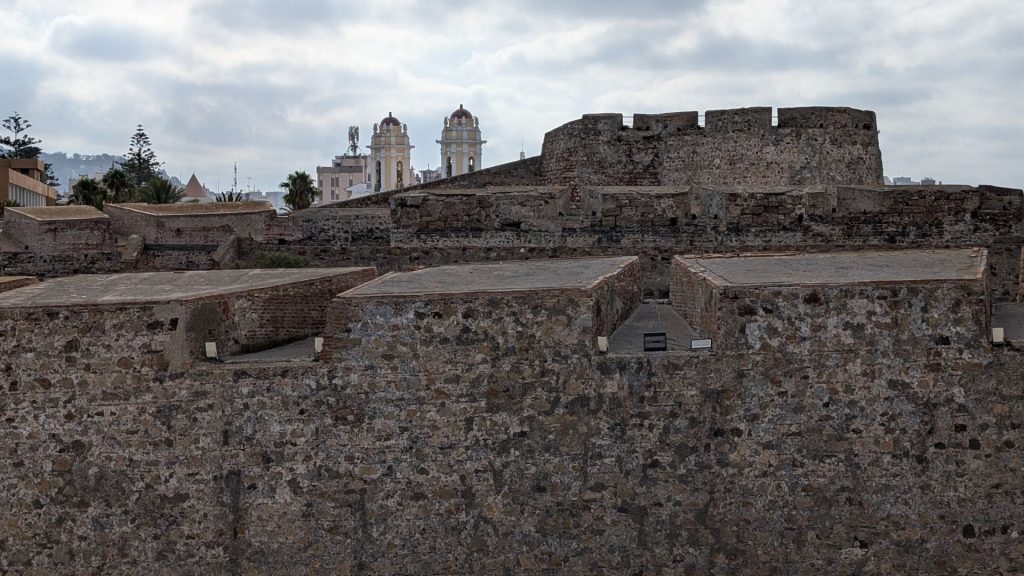
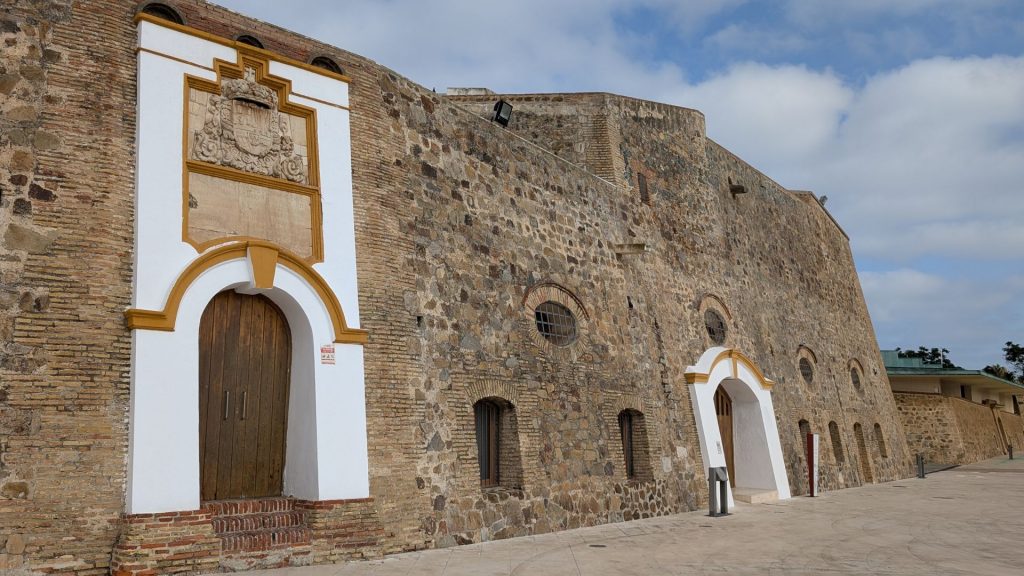
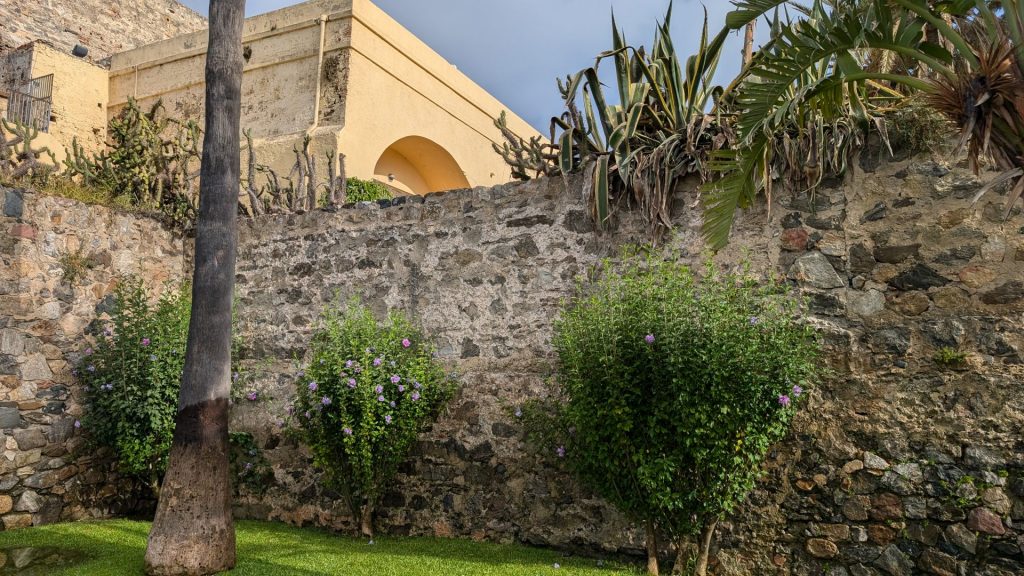
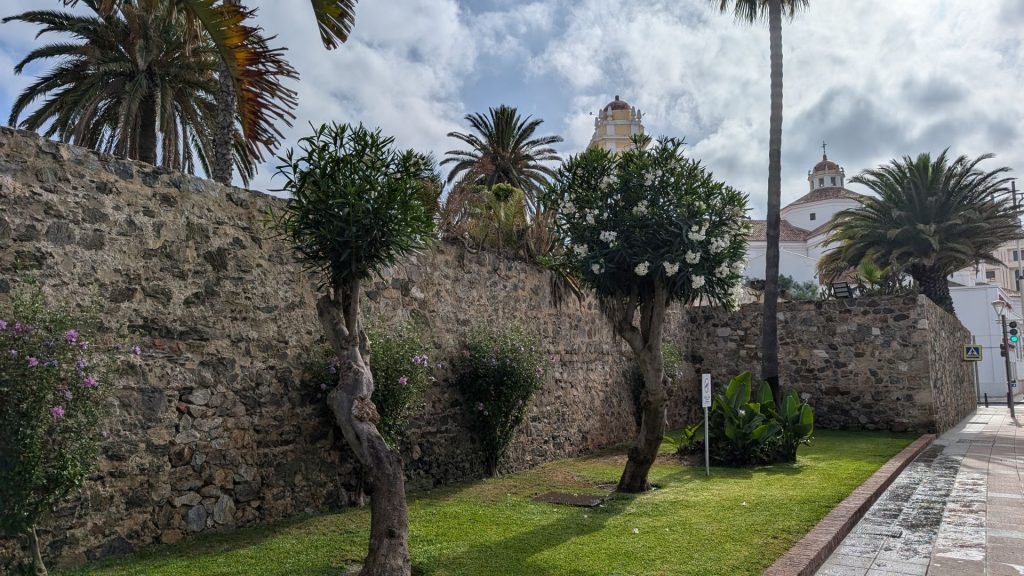
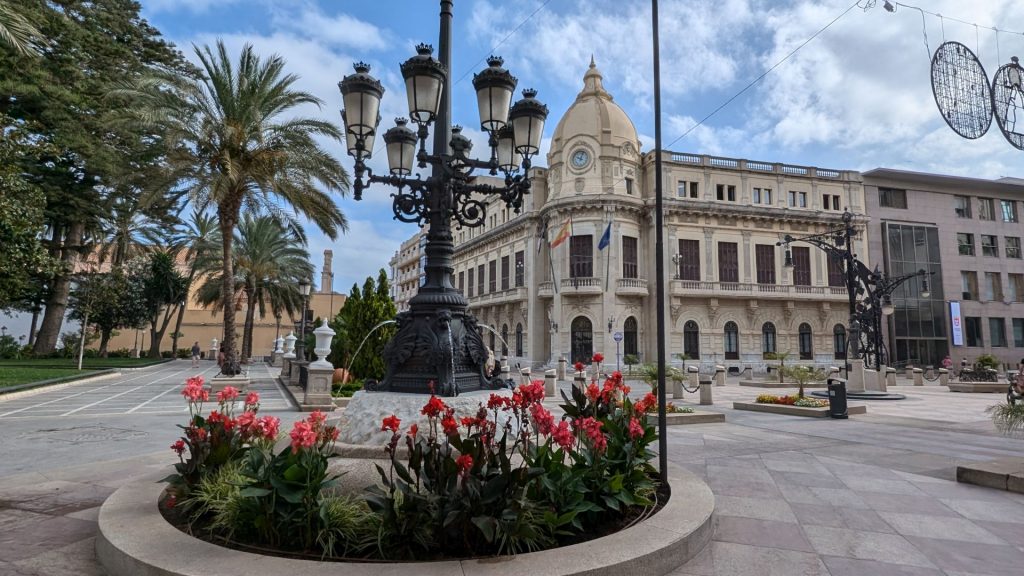
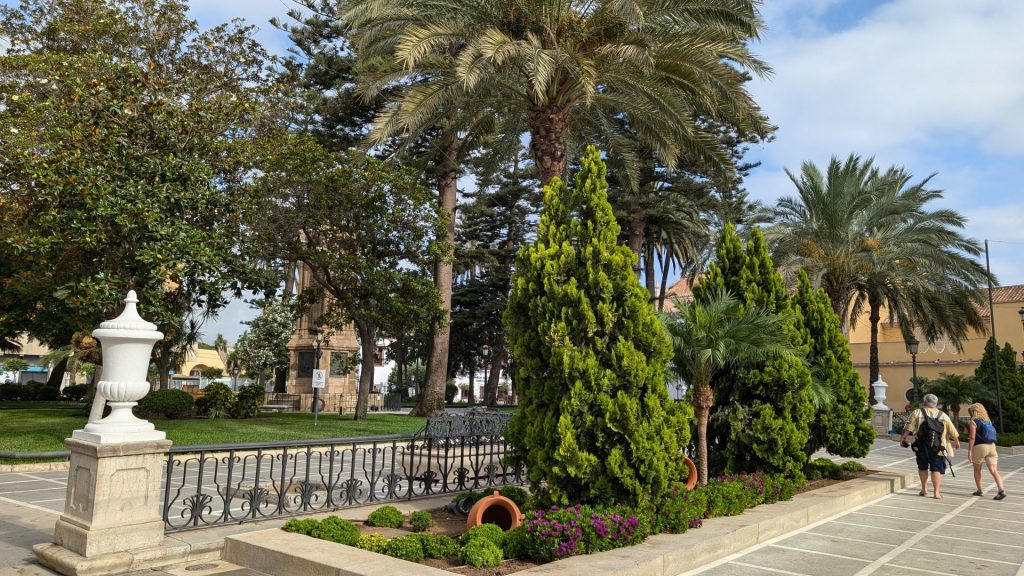
Pictured below is “The Monument to the Spanish Constitution.” This allegorical sculptural group dedicated to the Magna Carta features the figures of a woman and a girl standing before a stone column. Two plaques mounted on the column display Articles 2 and 14 of the Constitution.
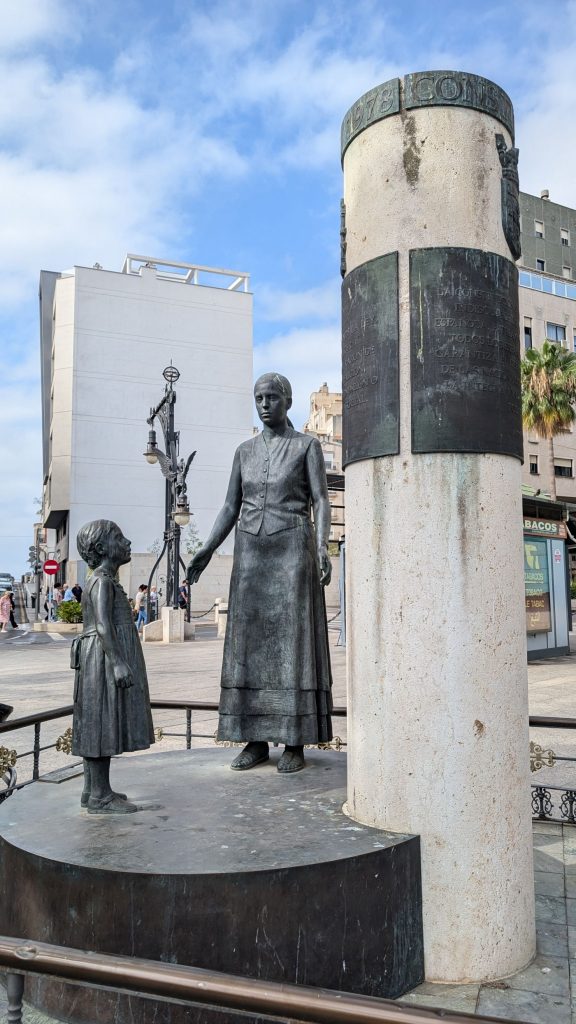
The Hercules Statue. The most iconic and well-known statue in Ceuta is that of Hercules. This impressive installation features two massive bronze pillars, each nearly 8 meters tall and weighing almost 4,000 kg. The statues are prominently located at the entrance to the port of Ceuta and in the Plaza de la Constitución. Created by Ceuta-born artist Ginés Serrán-Pagán, the sculptures symbolize the separation and union of Europe and Africa, situated in the myth’s original setting, the Strait of Gibraltar. According to legend, after dividing the continents to merge the waters, Hercules erected two columns, Abyla and Calpe, to mark this monumental event.
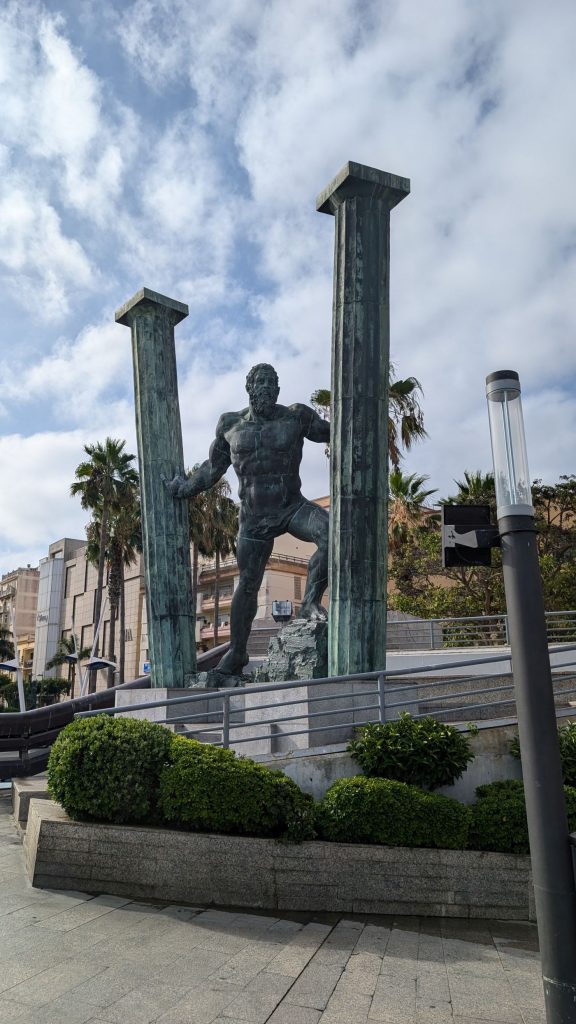
This Allegorical Sculptural Group consists of six allegorical sculptures representing Peace, Africa, Industry, the Arts, Commerce, and Work. The original figures were crafted from Carrara marble in Italy in 1892, commissioned by the Ceuta City Council. The statues currently on display are stone replicas, each standing at an average height of around 155 centimeters.
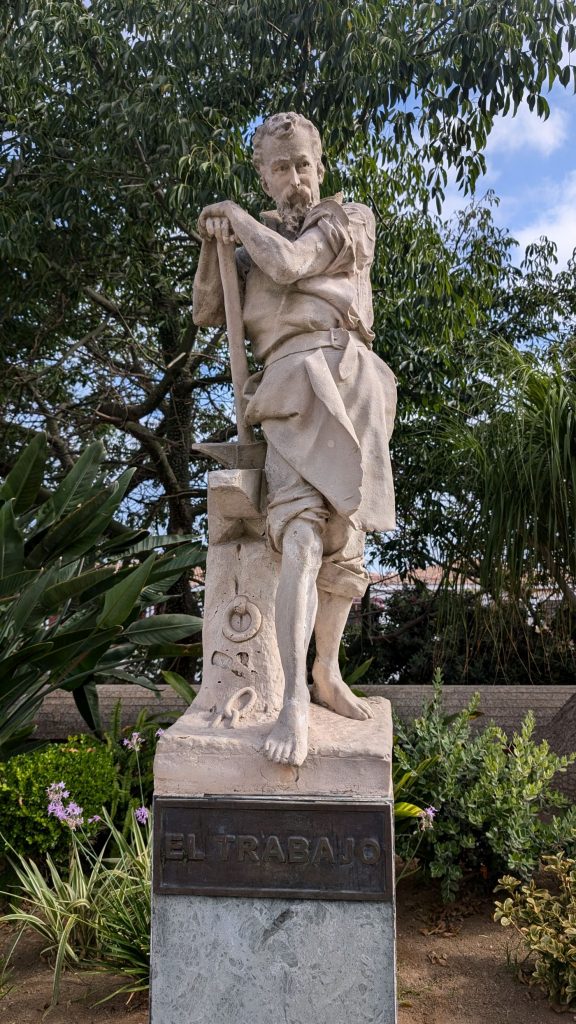
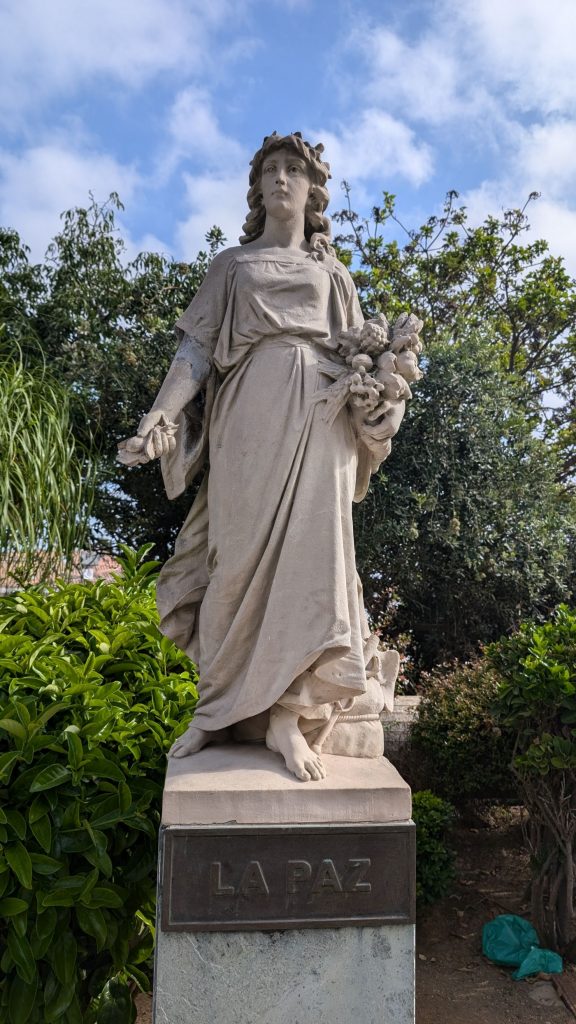
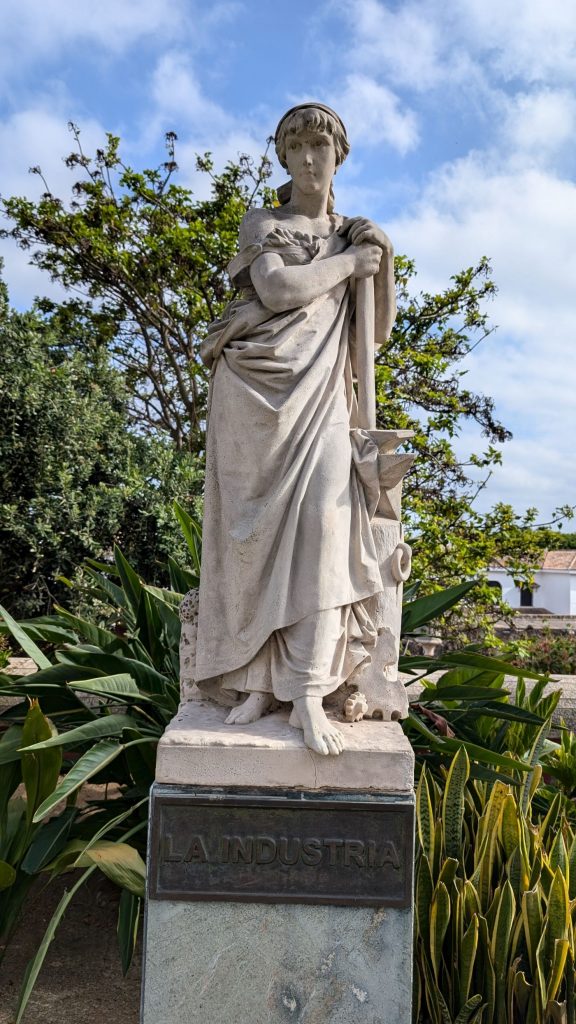
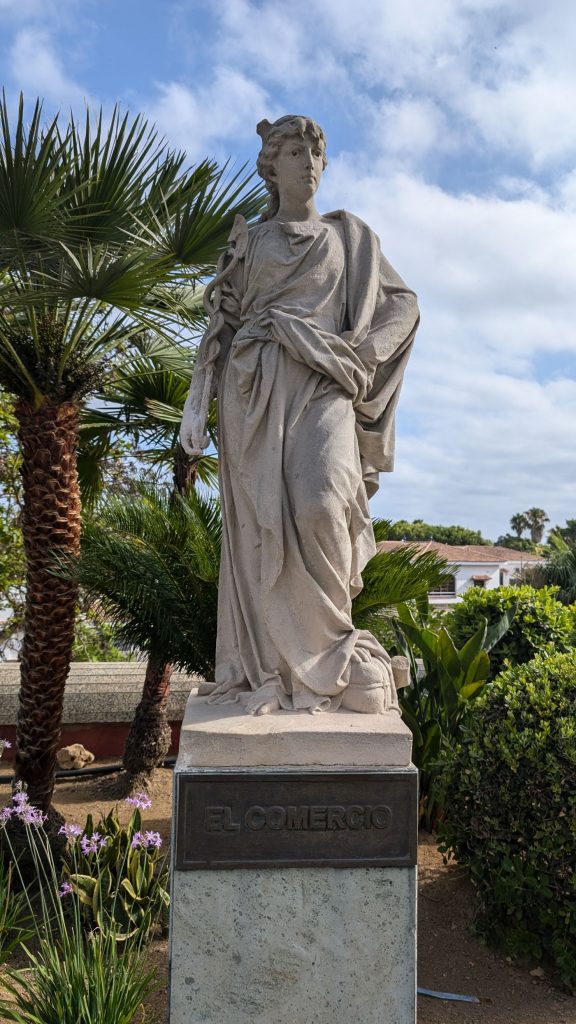
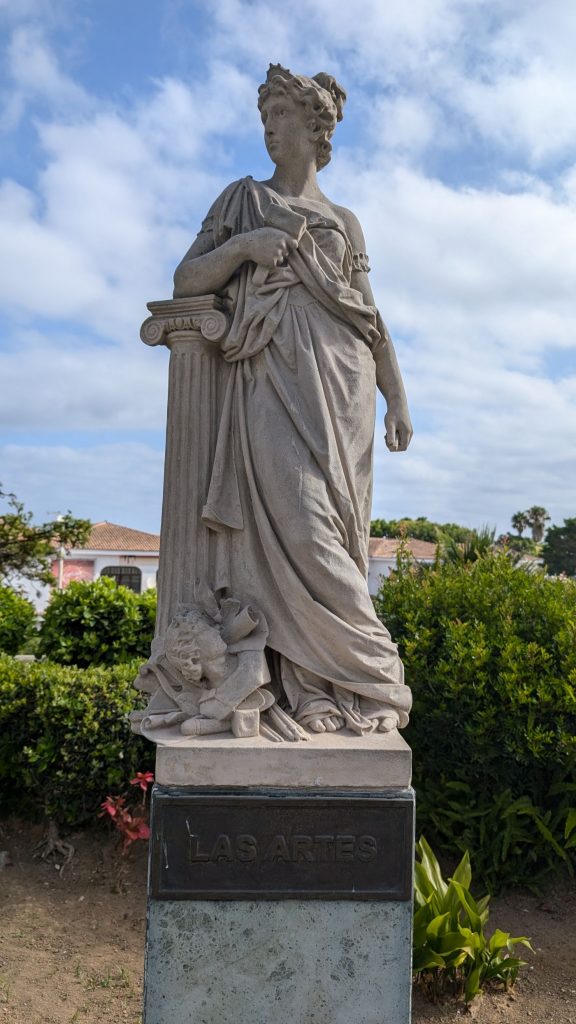
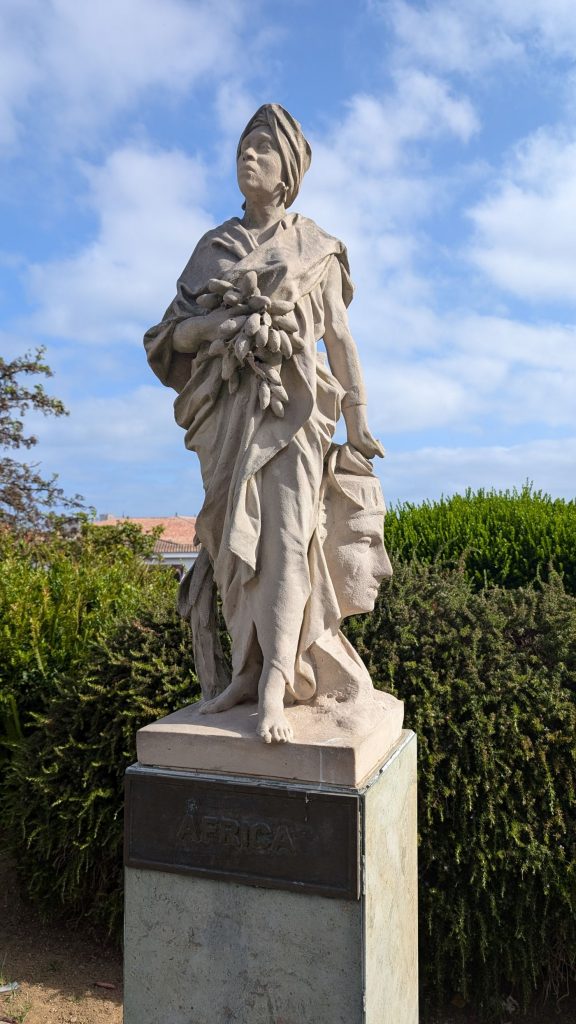
Calypso Statue Ceuta, standing nearly 5 meters tall, is one of the largest female bronze sculptures from classical mythology in the world. According to mythology, Calypso, the daughter of the god Atlas, resided on the ancient island of Ogygia, which is now known as Ceuta. The nymph saved Ulysses from a shipwreck as he returned to Ithaca from the Trojan War. As recounted in Homer’s Odyssey, Calypso lived with the Greek hero for ten years, during which they had three children, Nausithous, Nausinous, and Latinus.
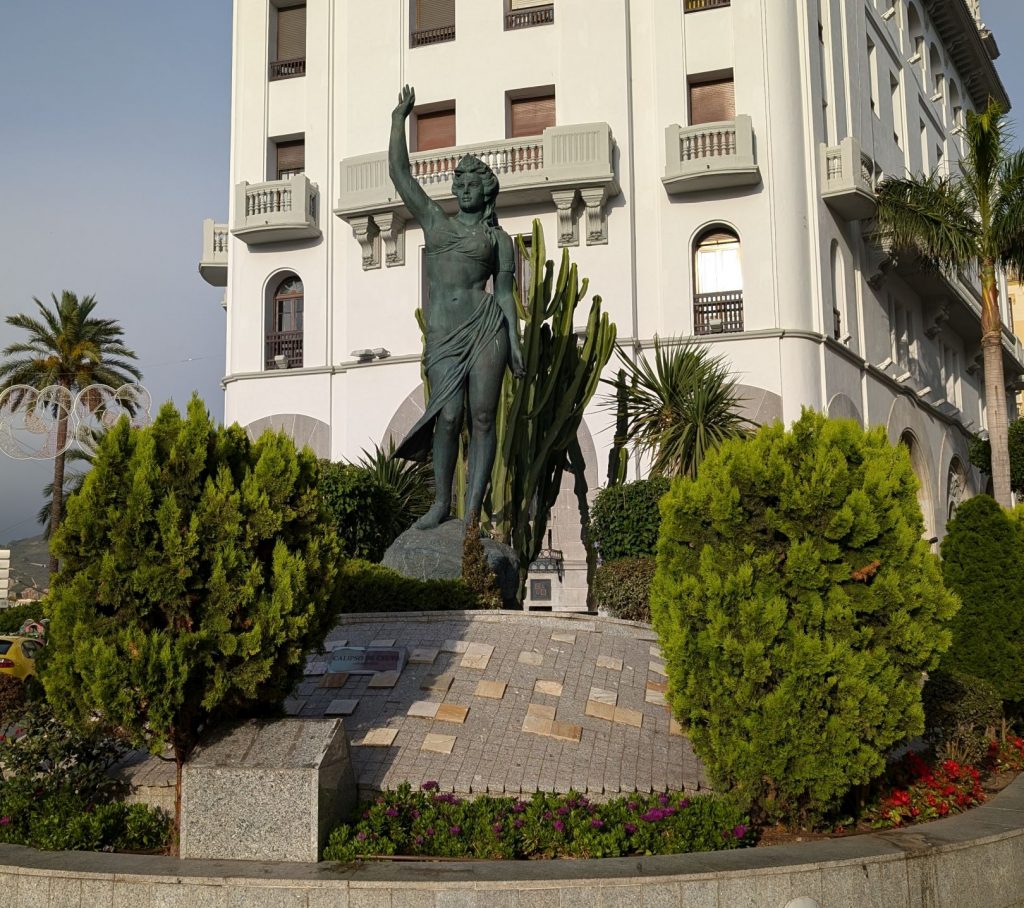
The Peace and Freedom Sculpture, made of bronze and created by Spanish sculptor Juan de Ávalos, honors the Spanish Constitution. The sculpture depicts a young woman releasing a dove with her right hand while holding a chain in her left. At its base, a plaque reads: “Peace and freedom. The people of Ceuta to the Constitution of 1978. Juan de Ávalos.”
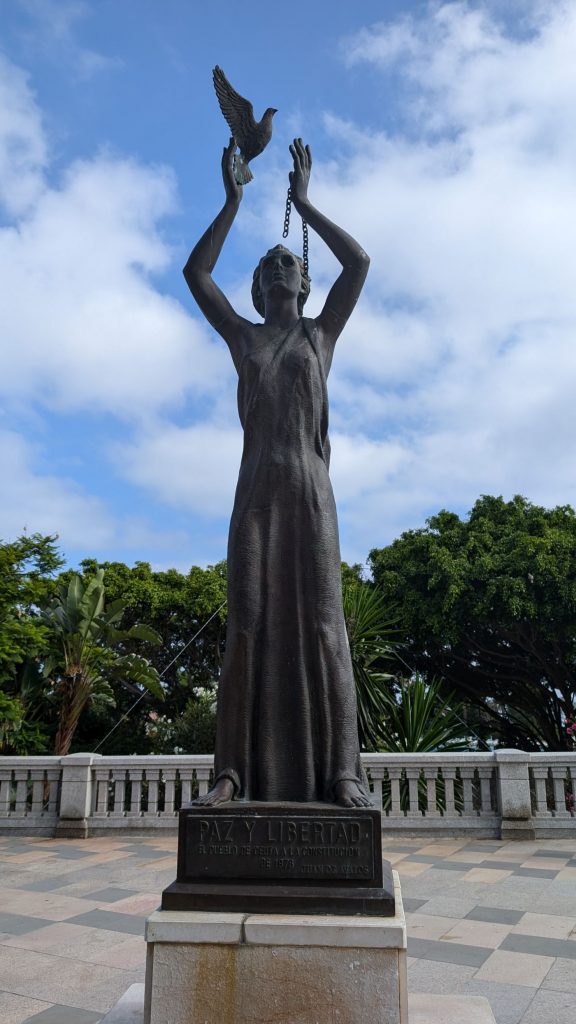
The McDonalds building matches the original stone of older buildings in an attempt to blend in.
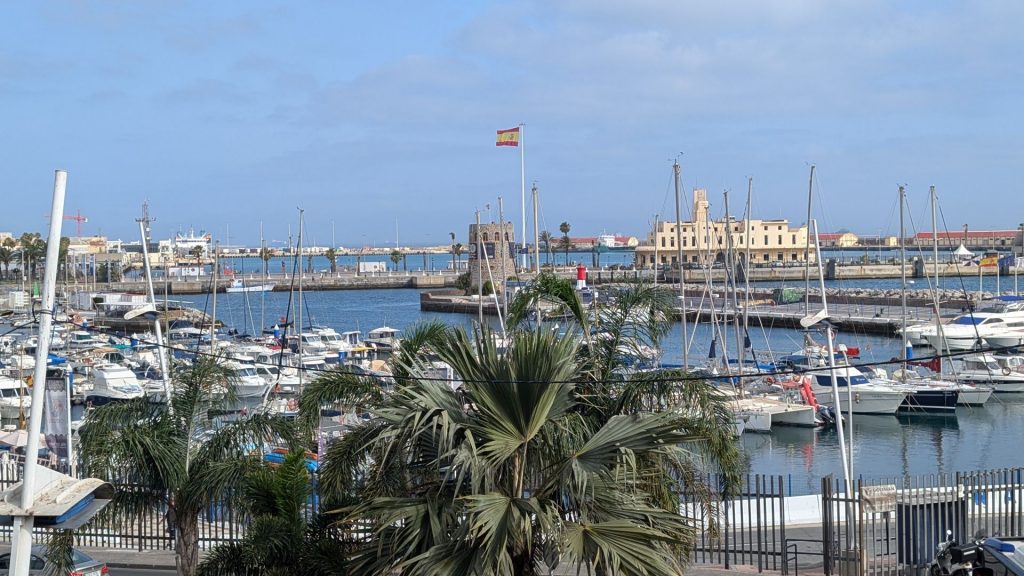
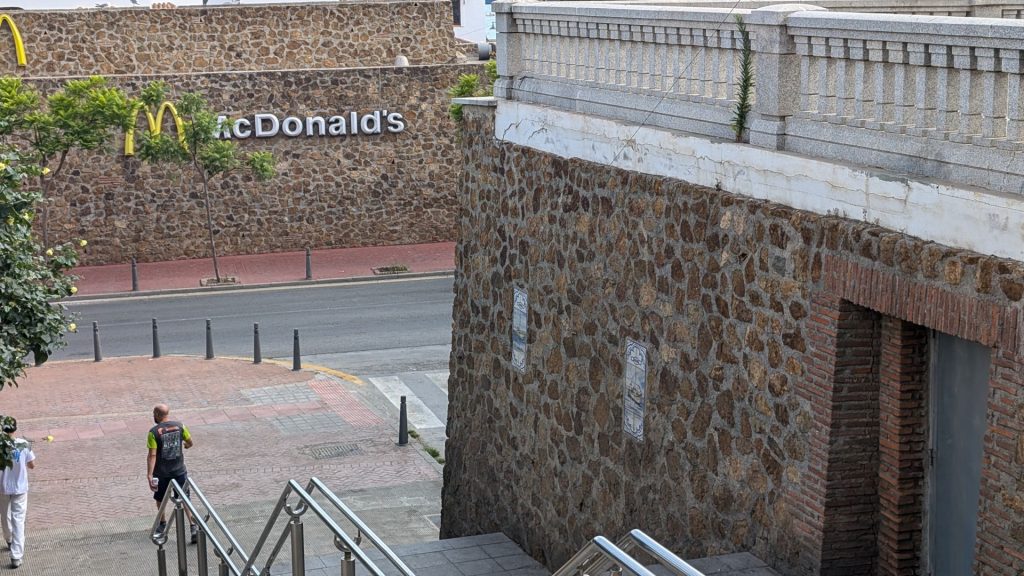
I’d read about a water park. It turned out to be part of the casino. We didn’t enter it, but we took some pictures since it looked pretty nice.
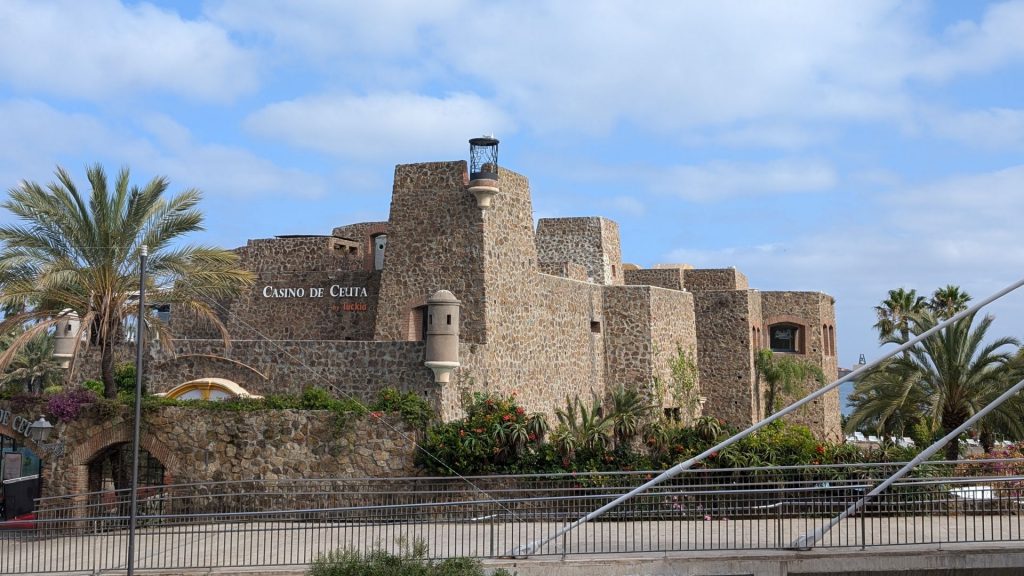
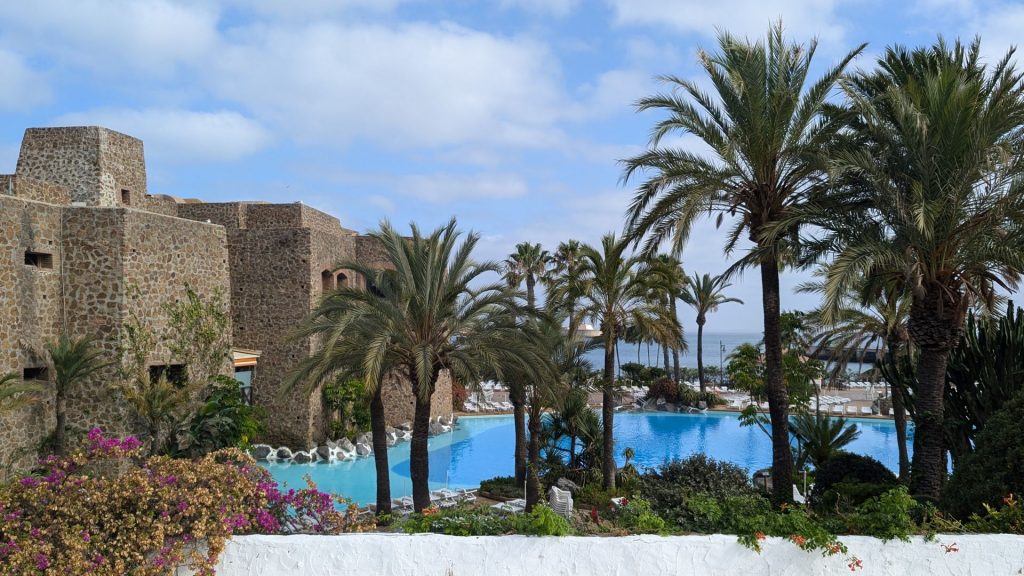
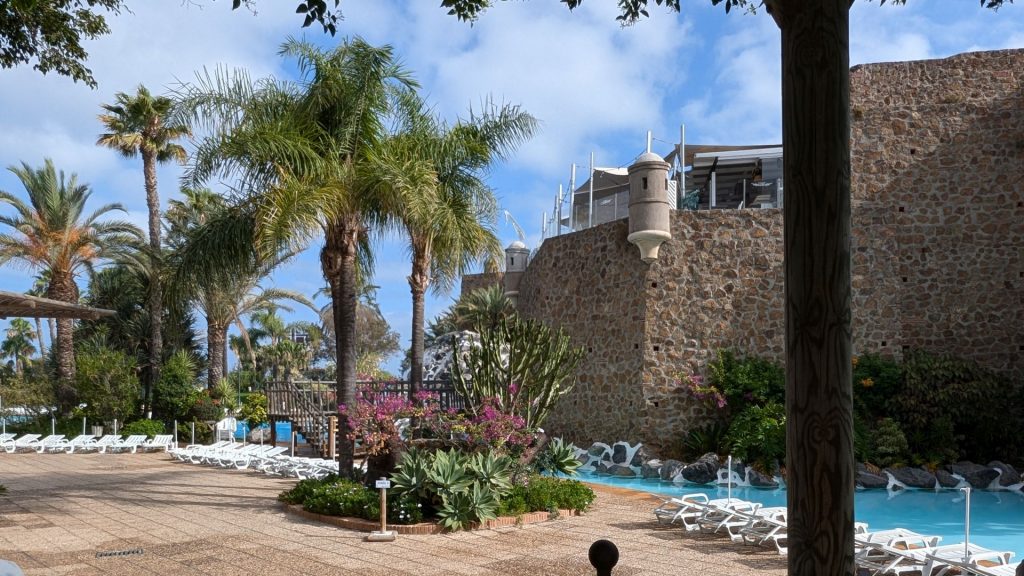
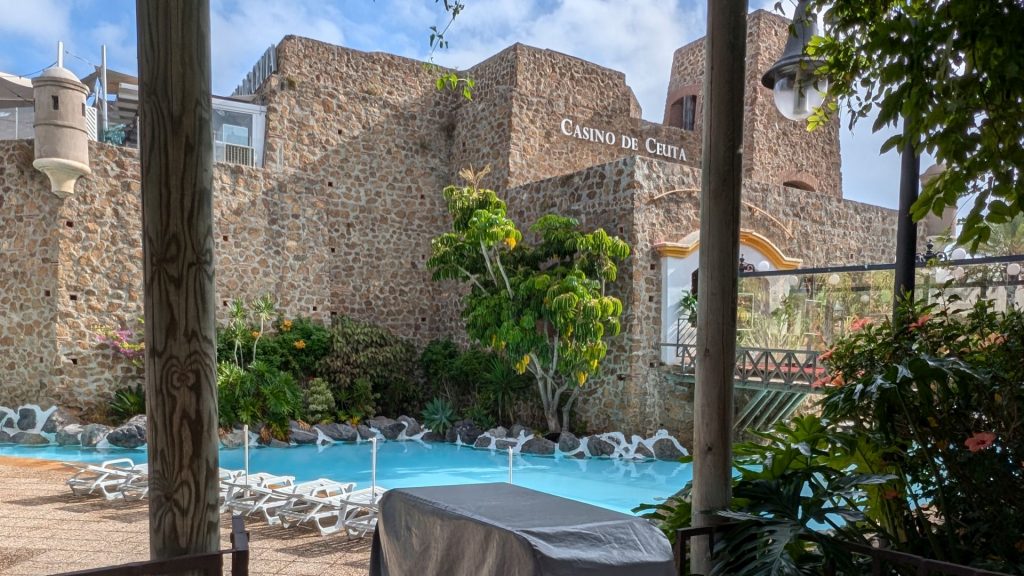
Our “cultural/historical” visit included a trip to the Museum of the Late Roman Basilica. The museum houses archaeological artifacts from a late Roman era basilica found in the region, showcasing primarily 4th century Christian remains considered unique in the Northern Mediterranean area.
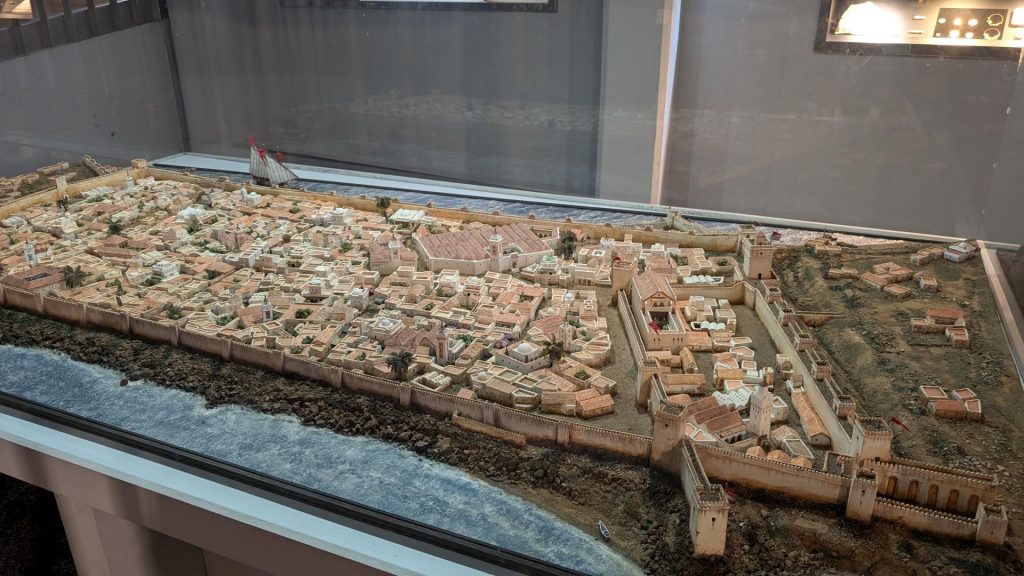
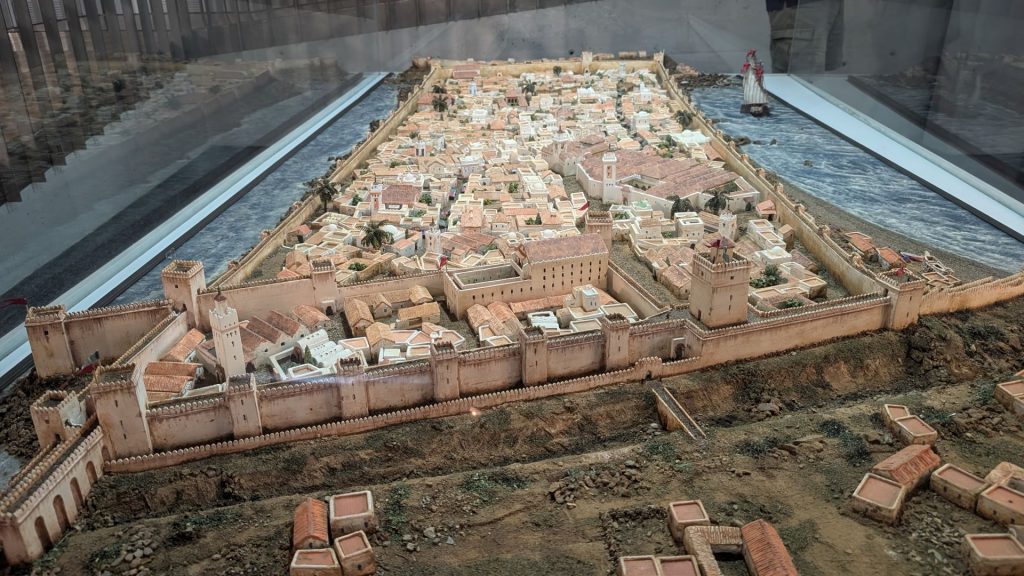
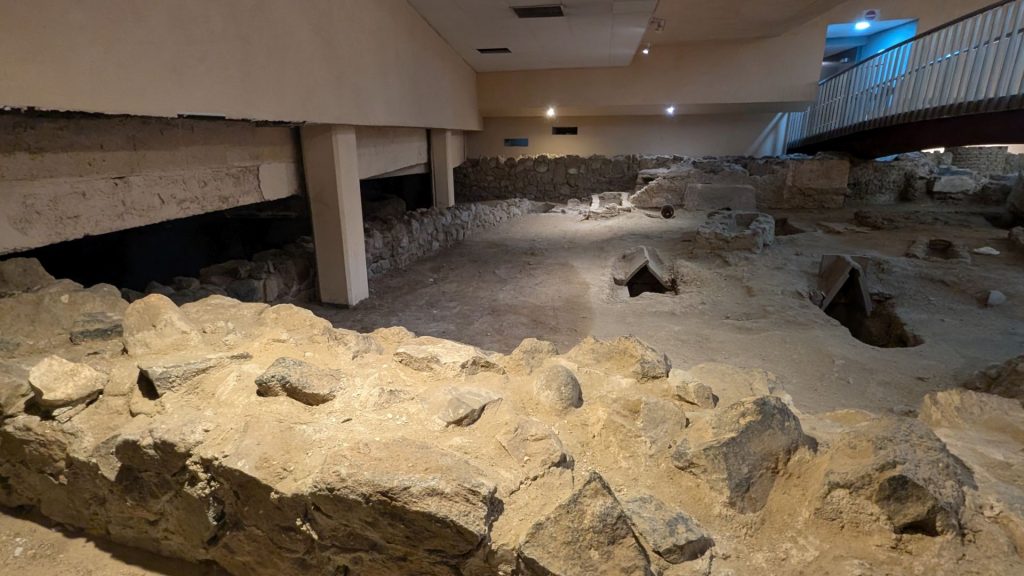
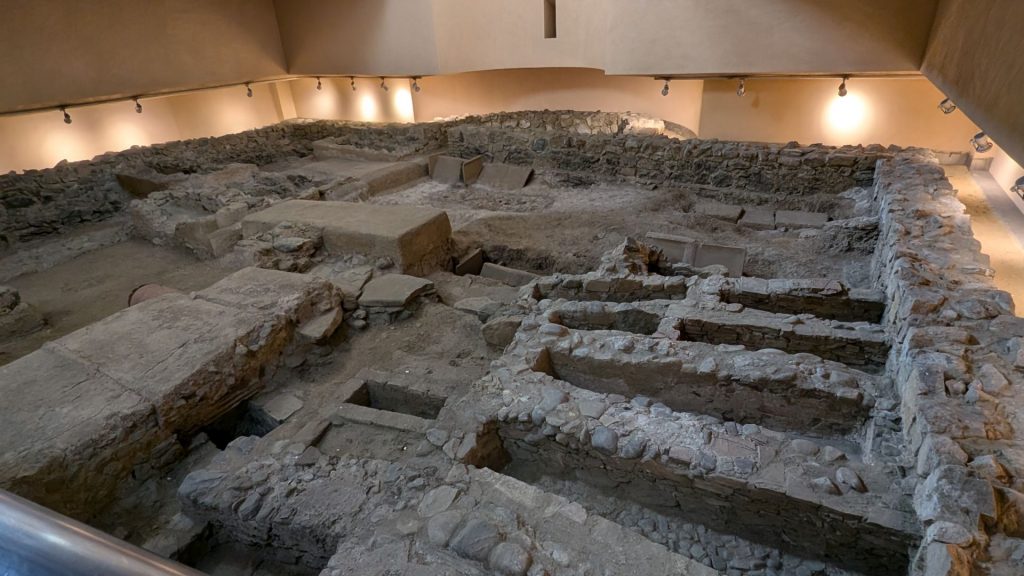
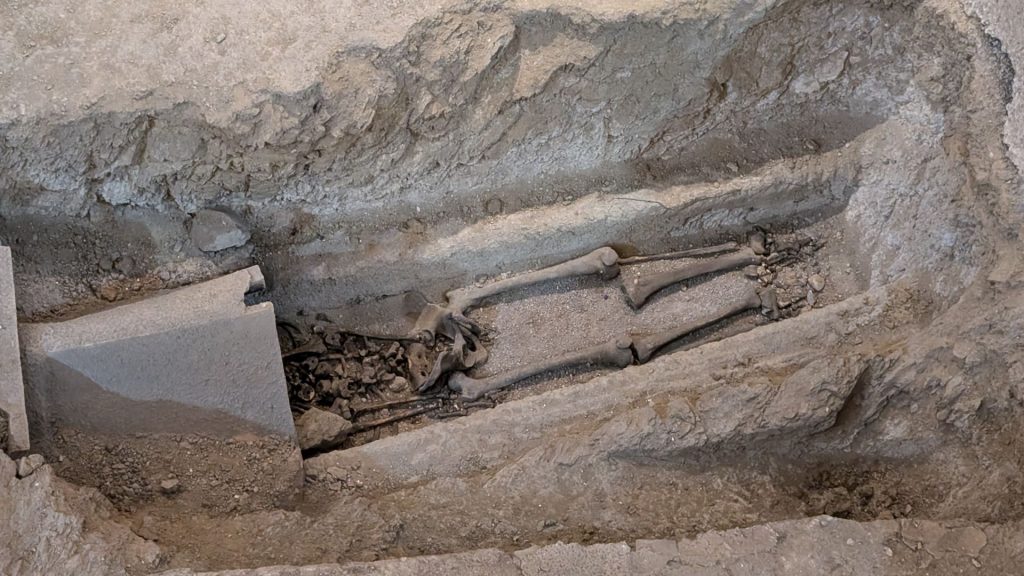
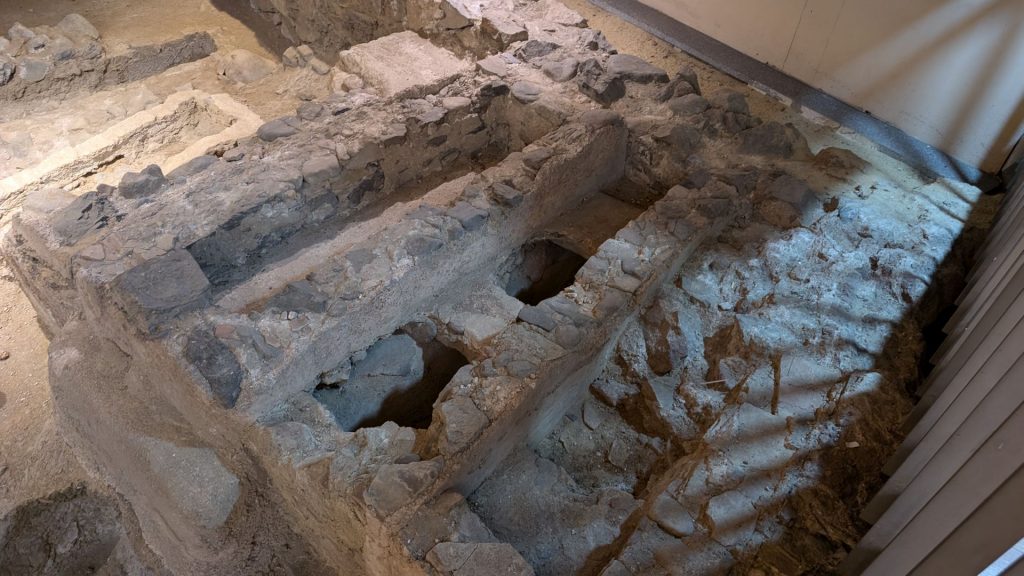
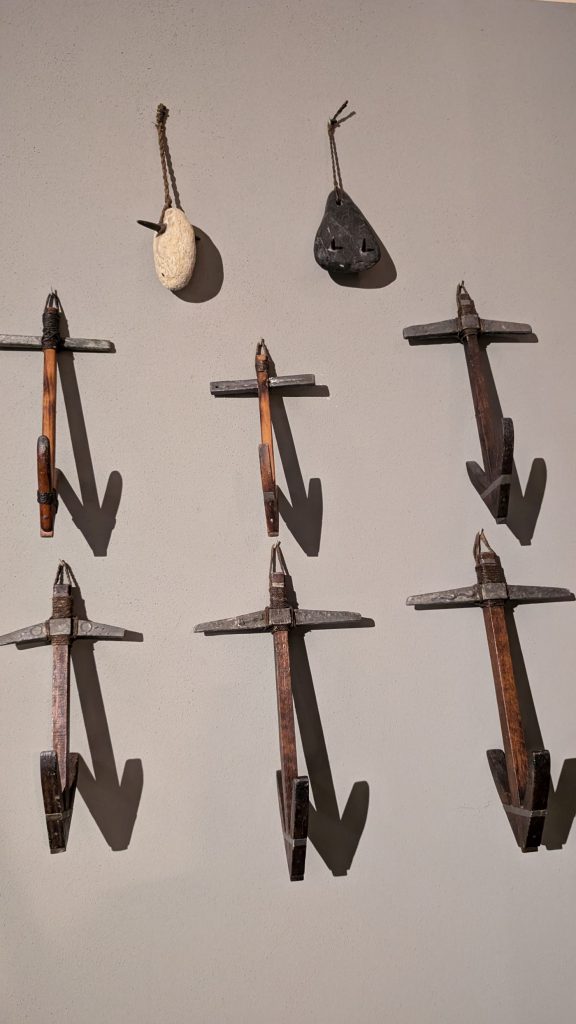
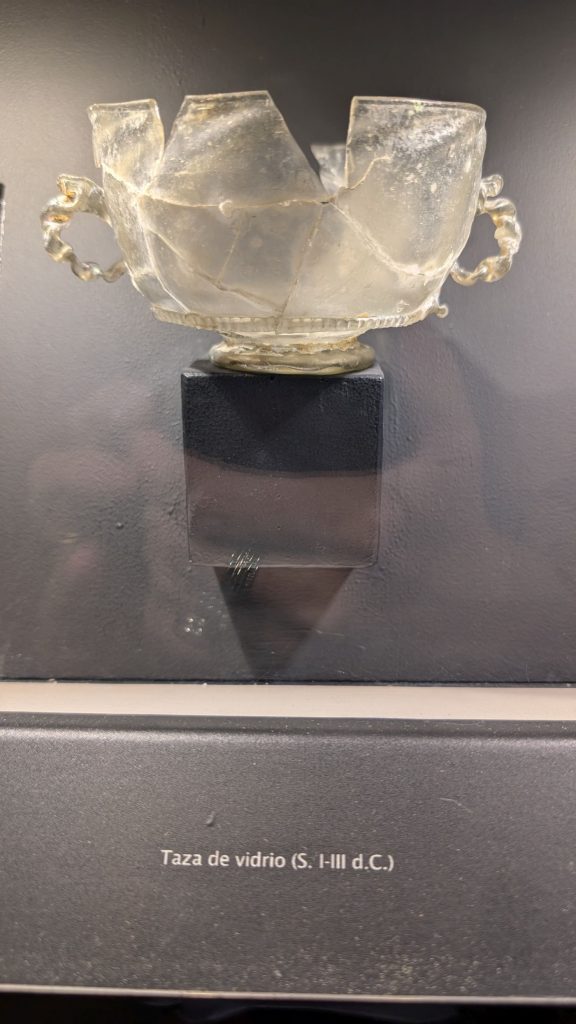
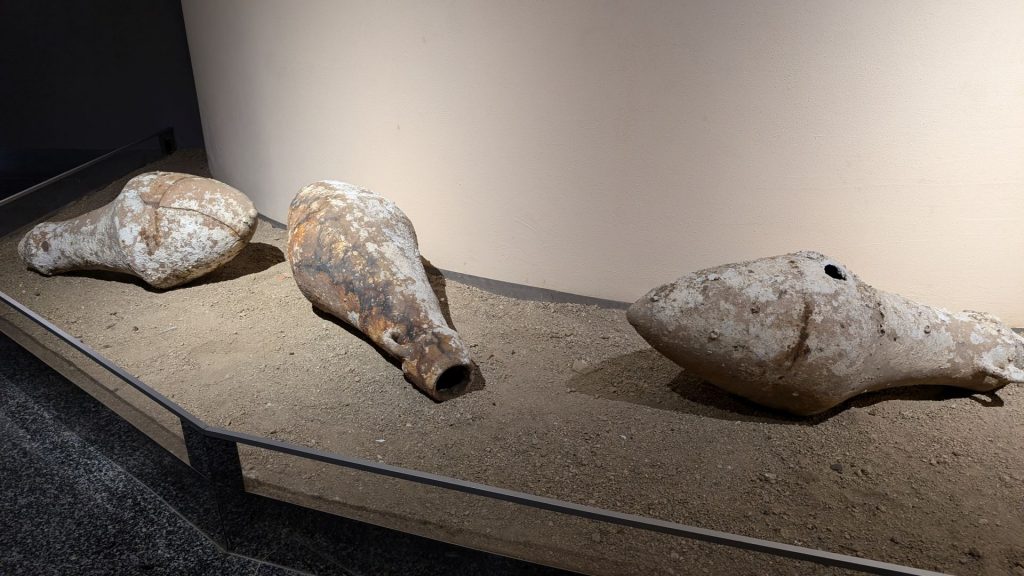
We stopped at a park to enjoy some greenery.
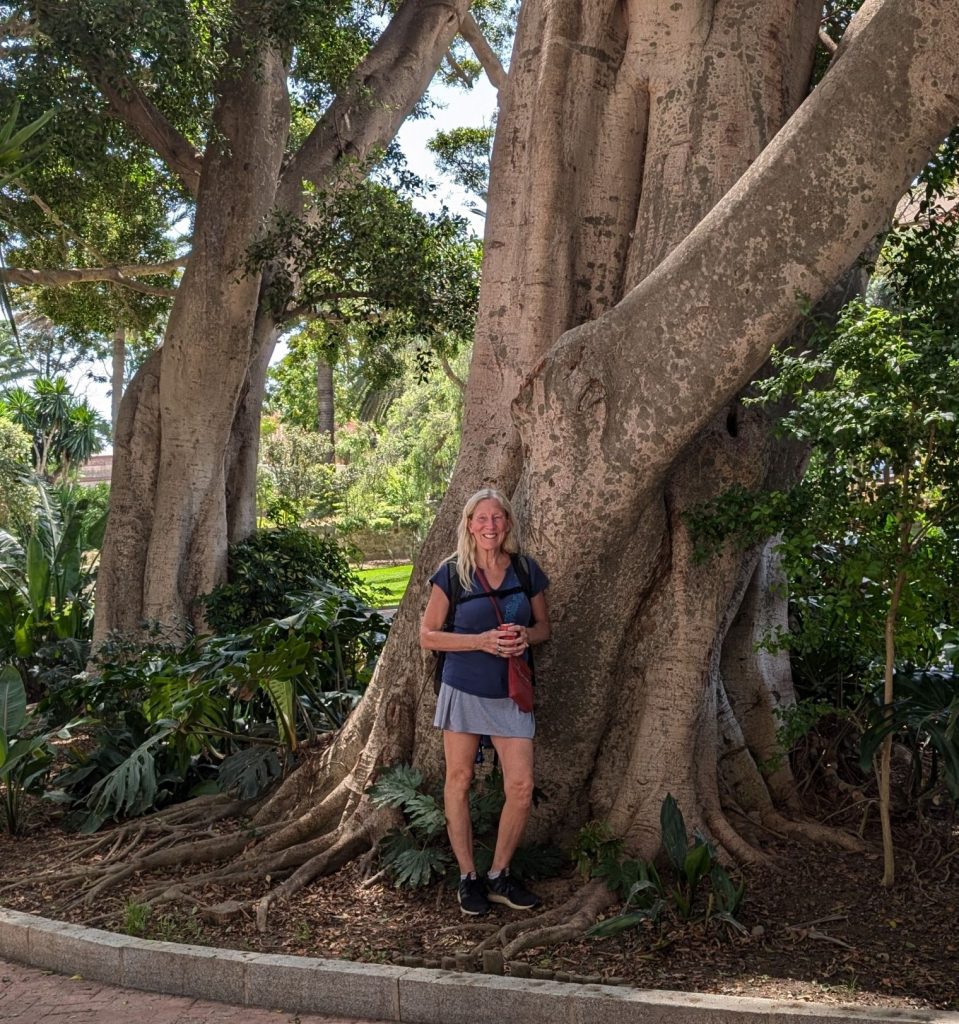
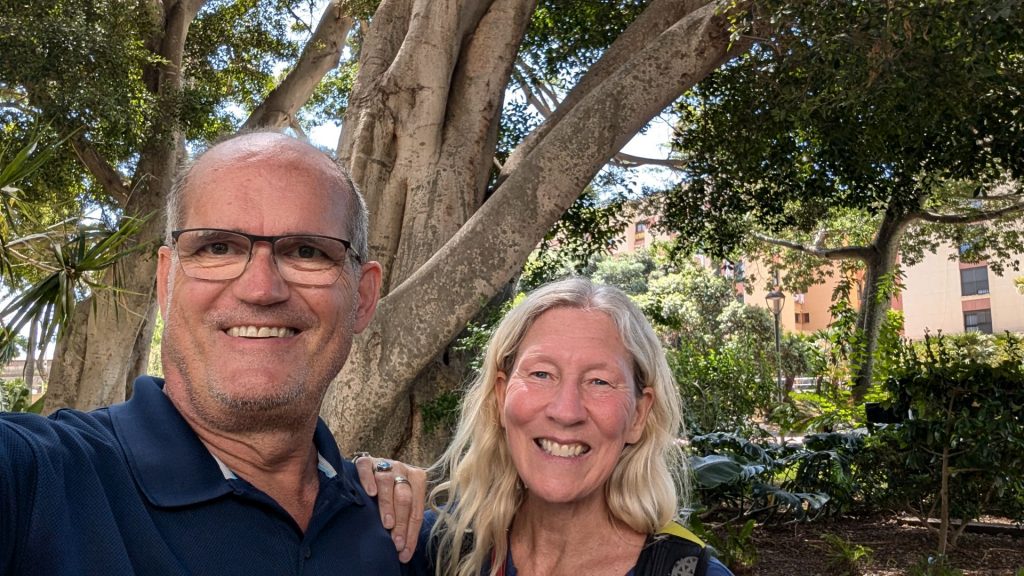
One more cool roundabout:
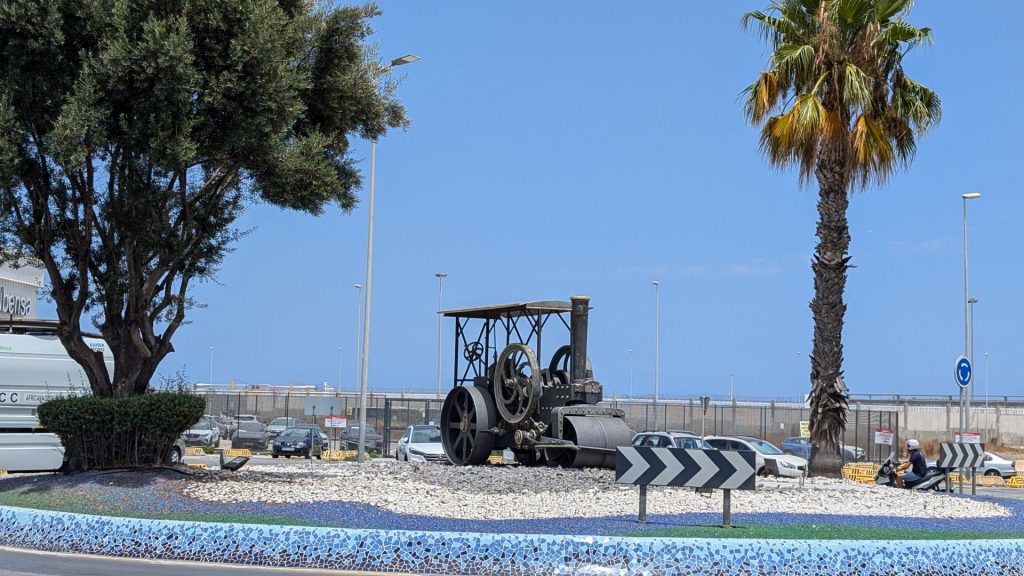
And back on the ferry we went!
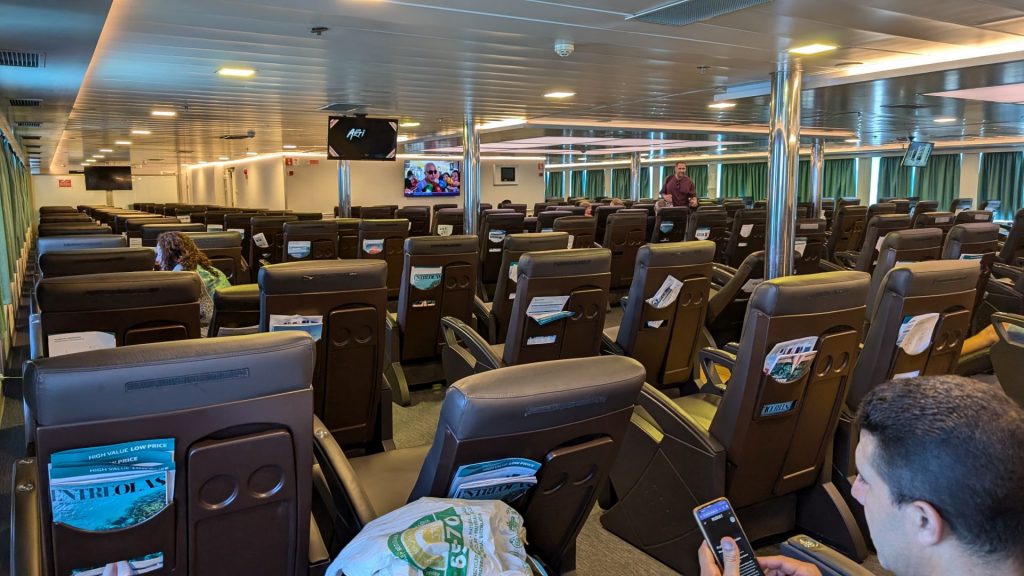
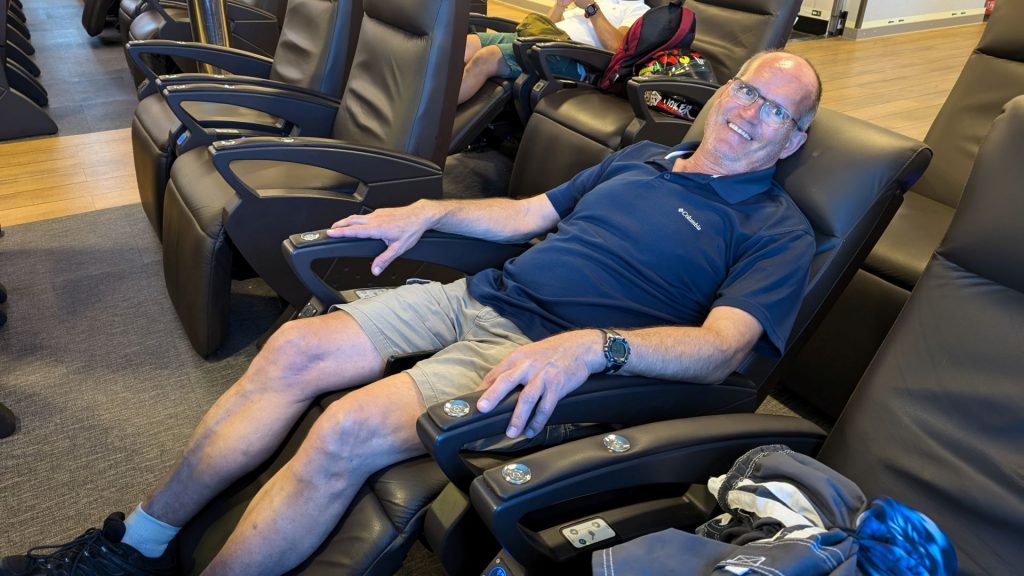
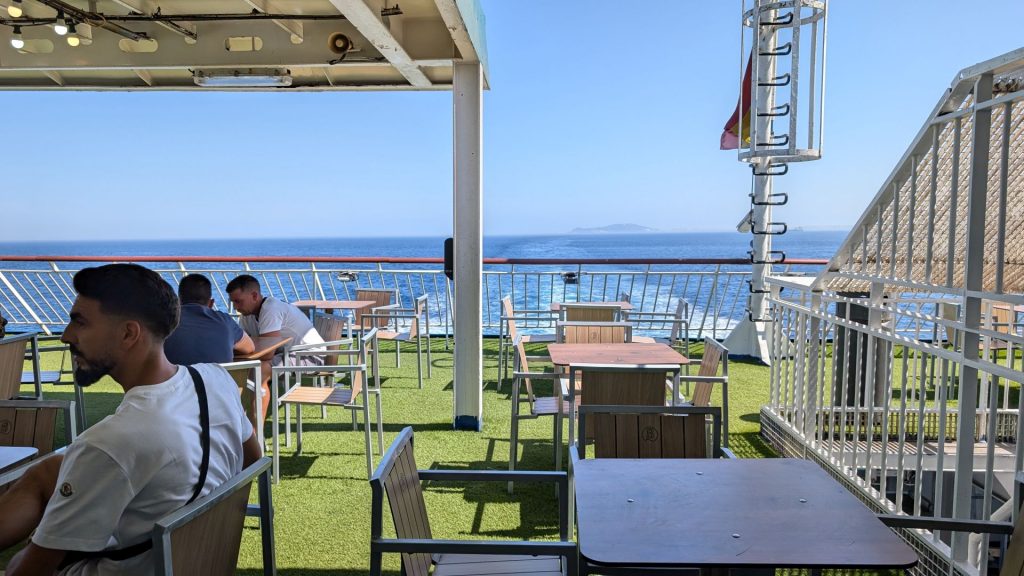
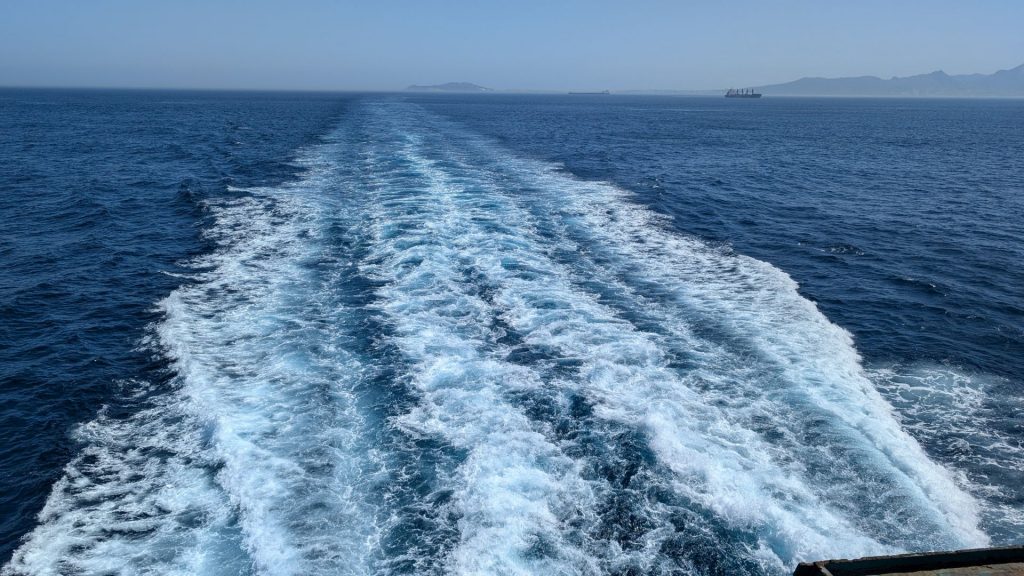
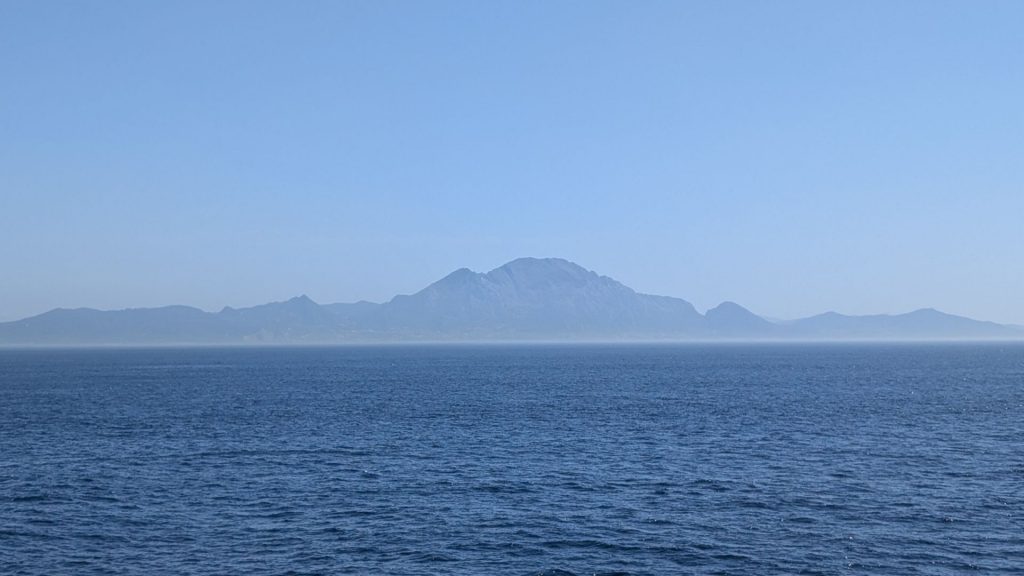
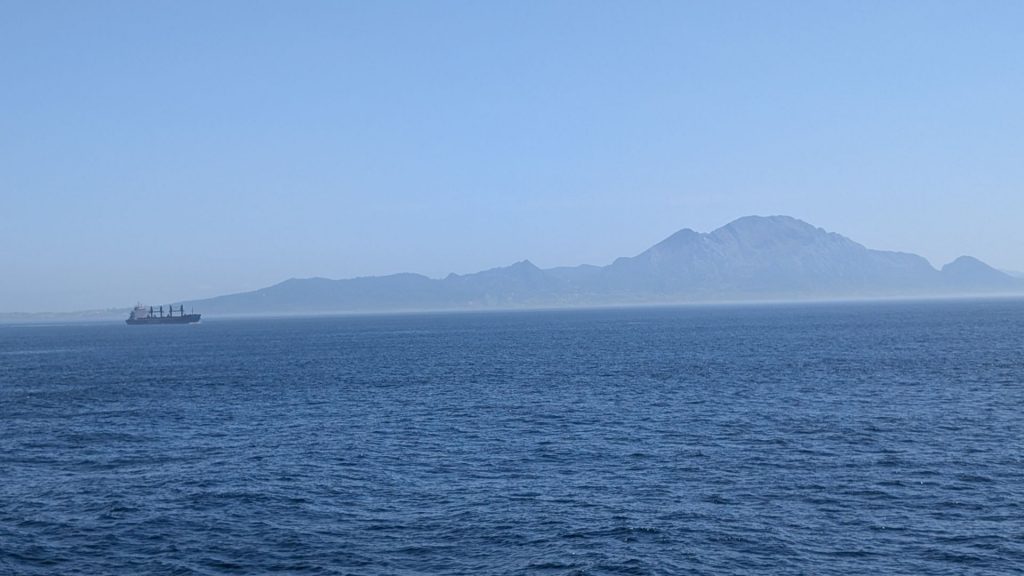
Followed by the bus ride to the marina. The date, time and temp displayed on the bus were again incorrect. These small things amuse me.
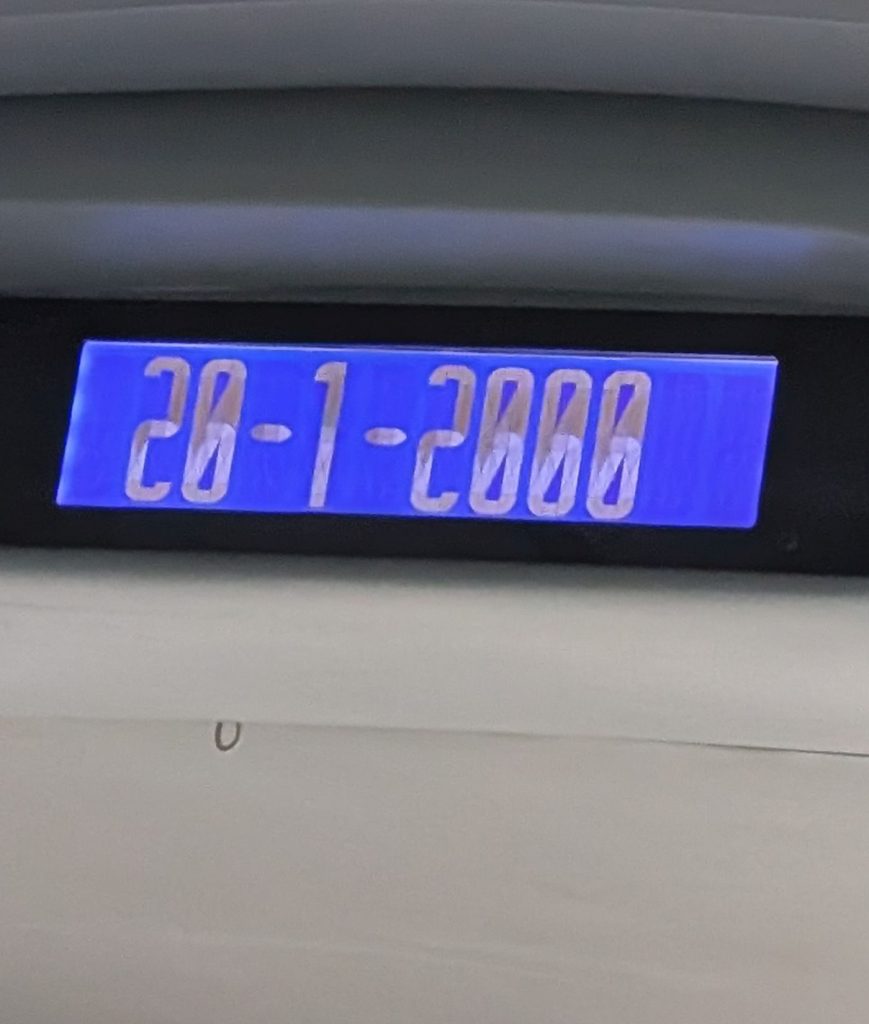
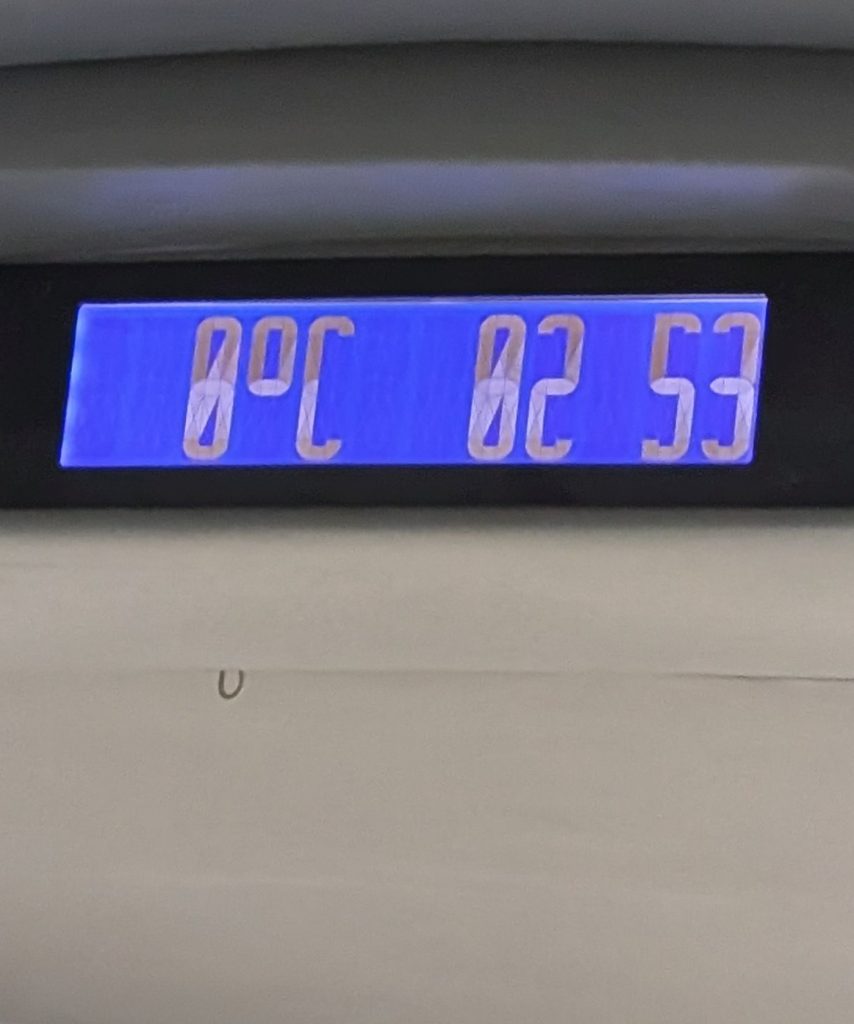
Home Sweet Home (however temporary) again:
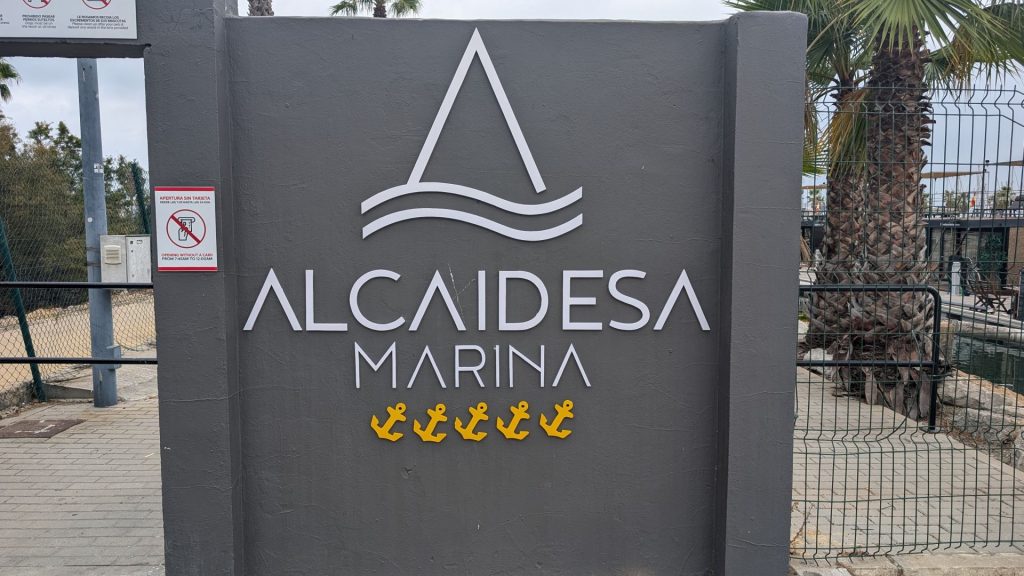
The next few posts will cover our road trip to Portugal and Seville.
